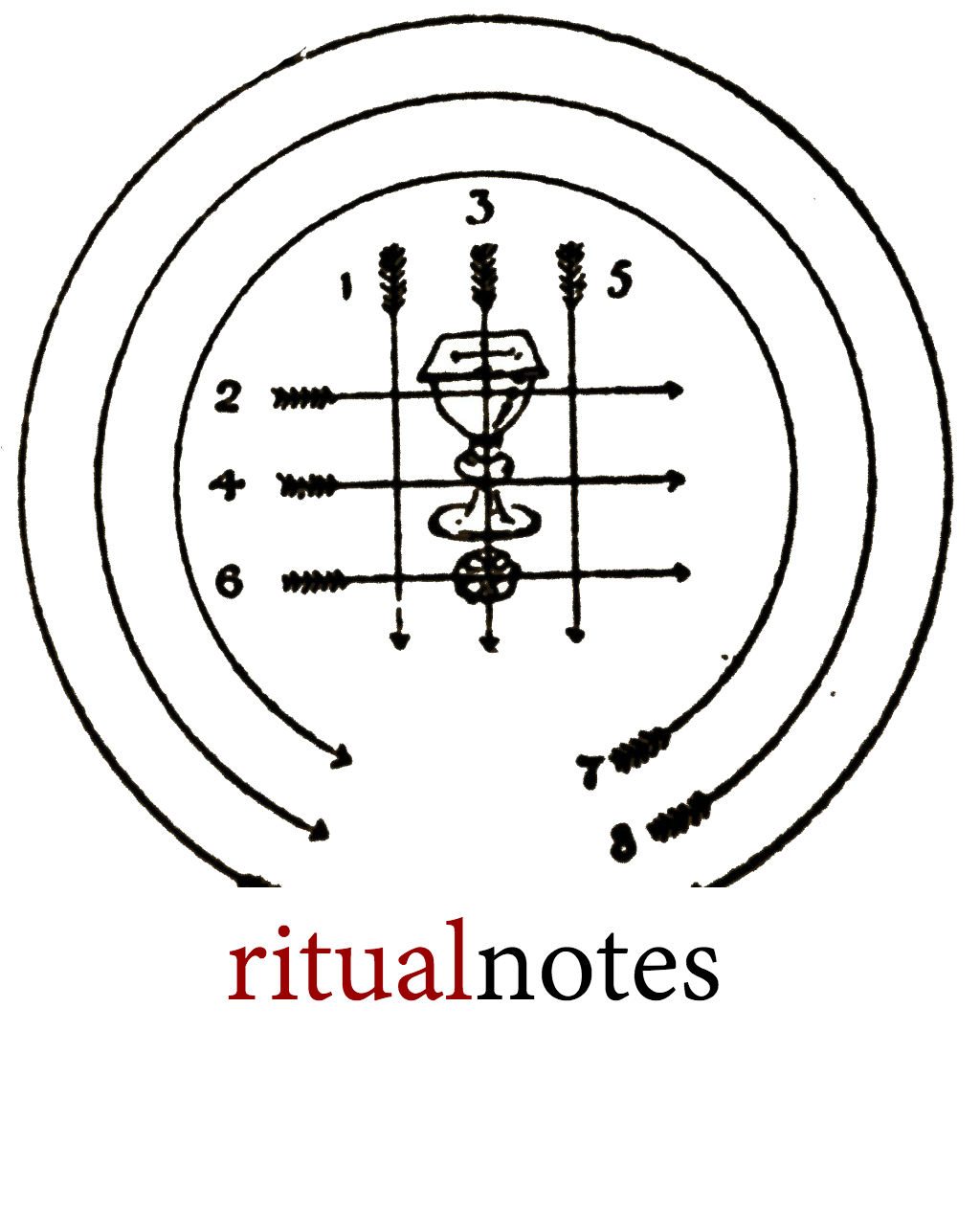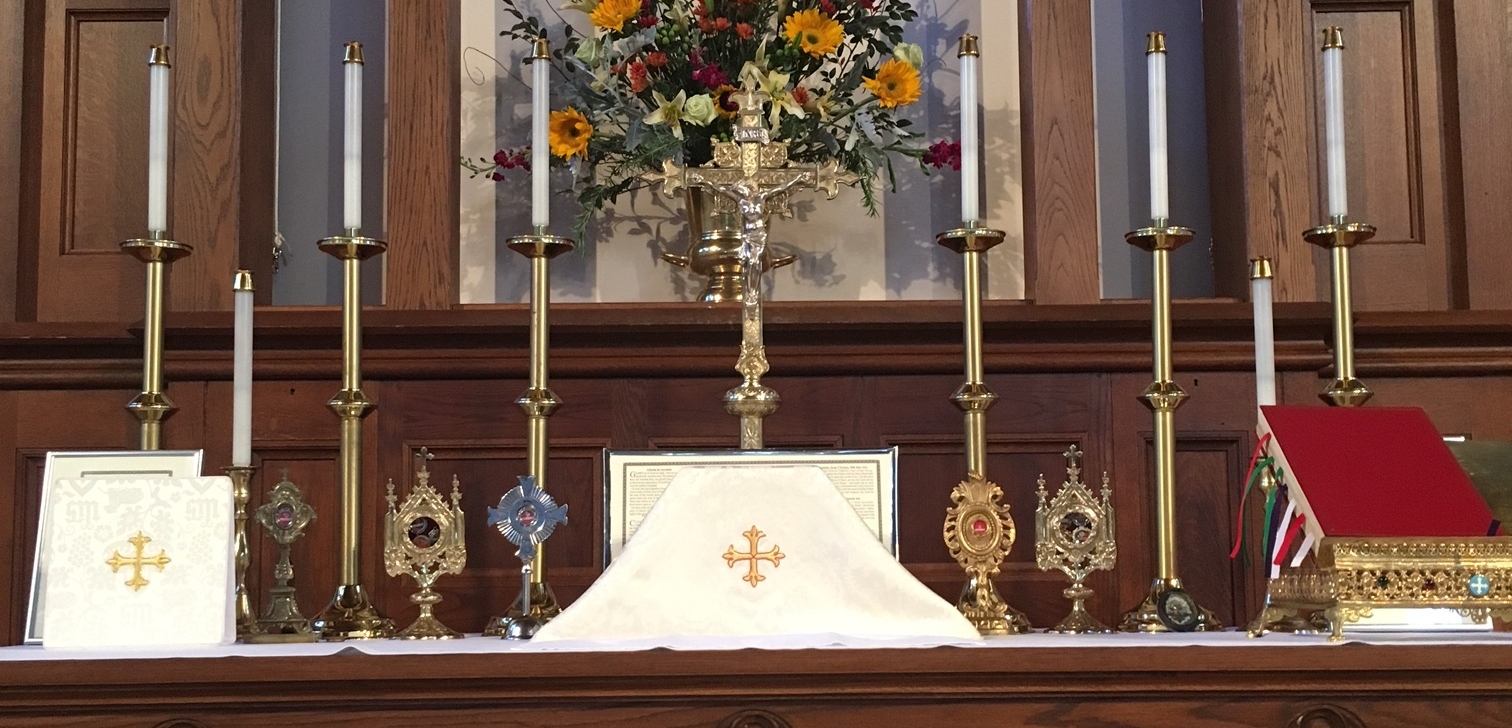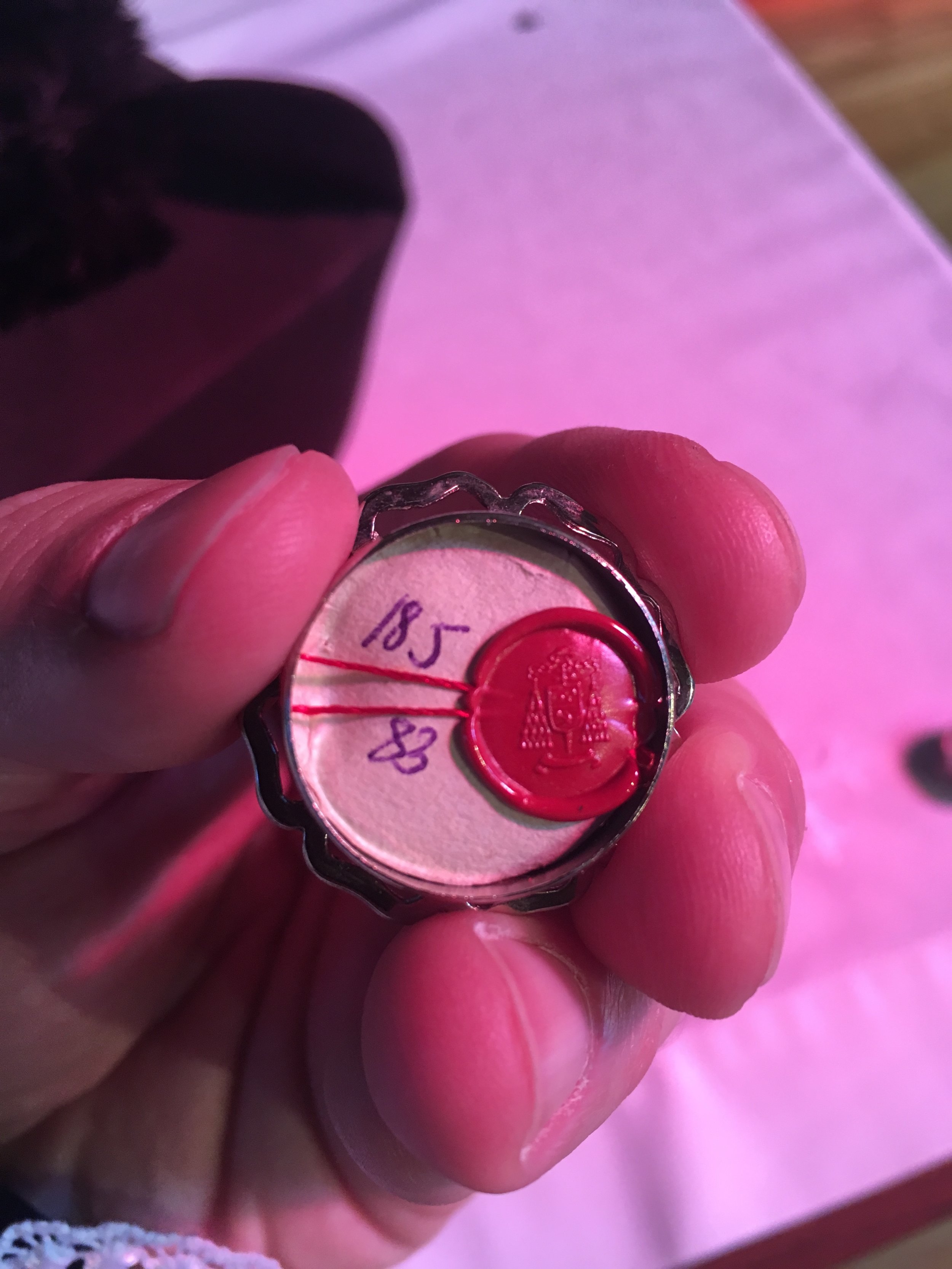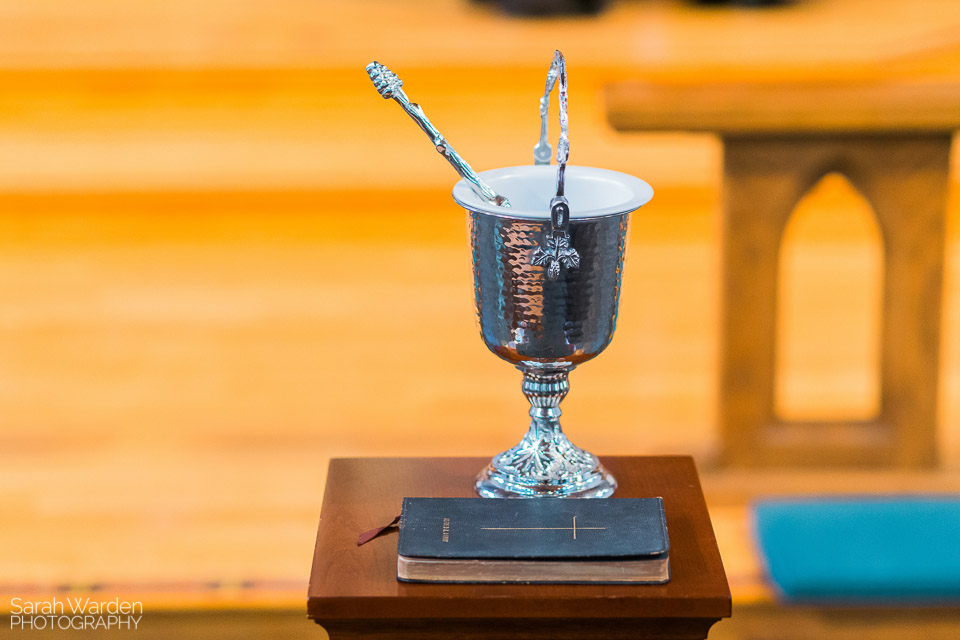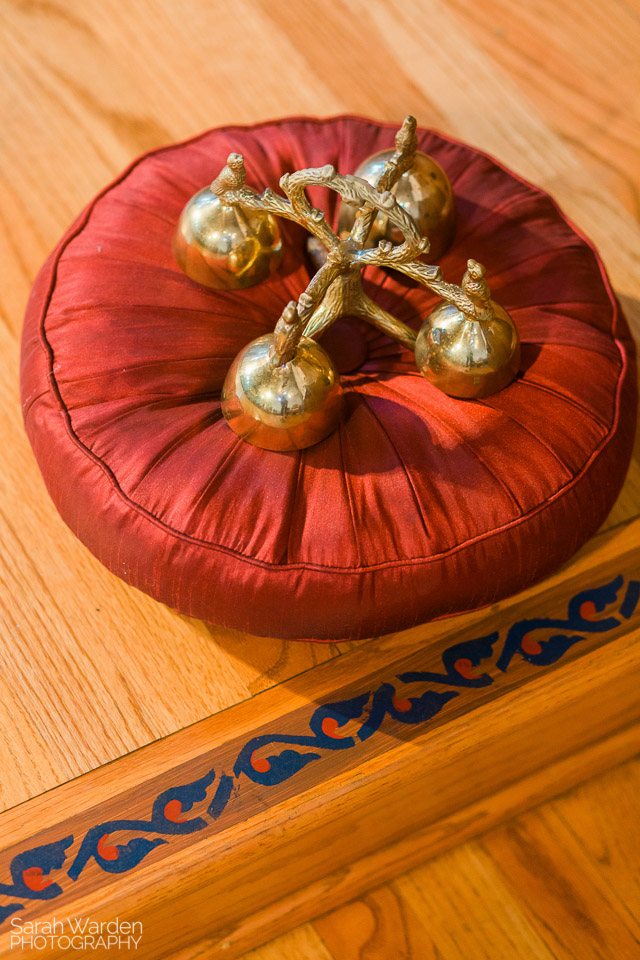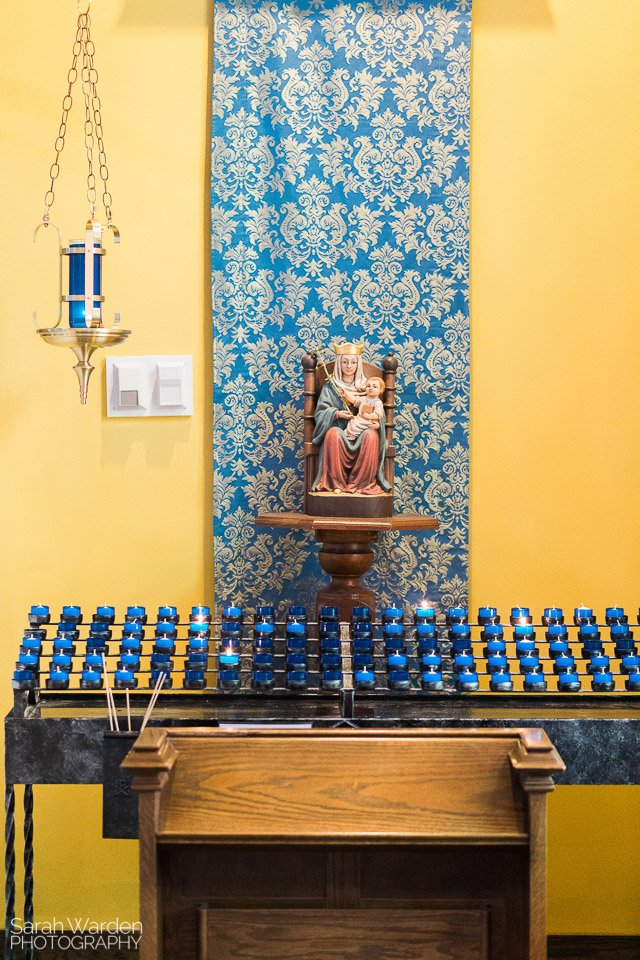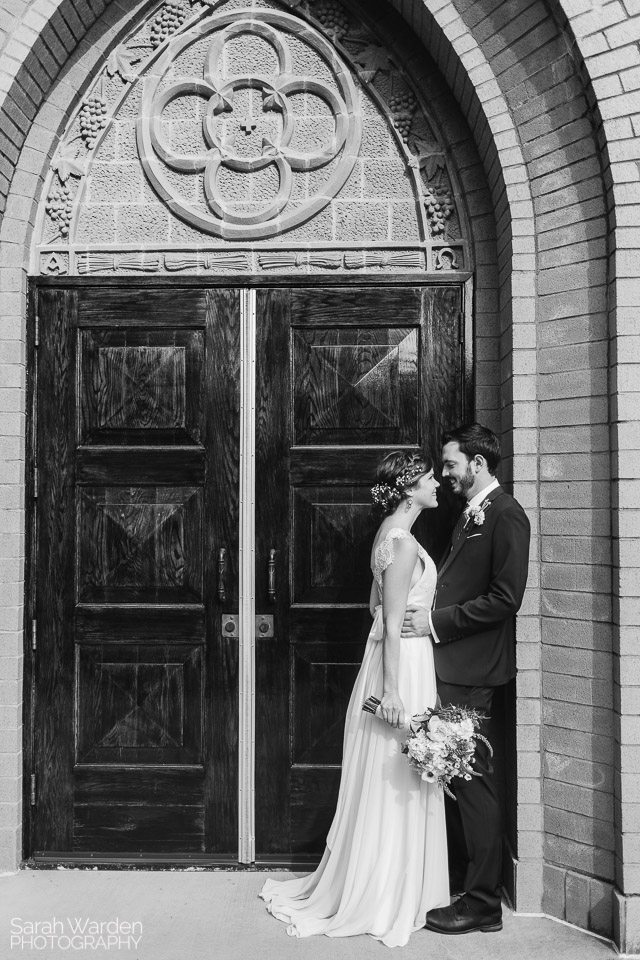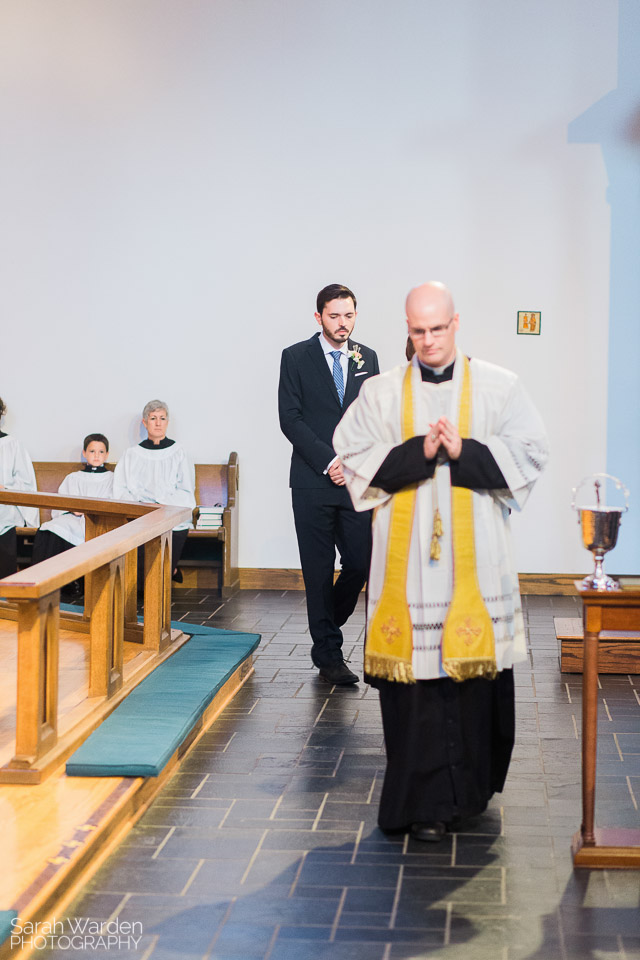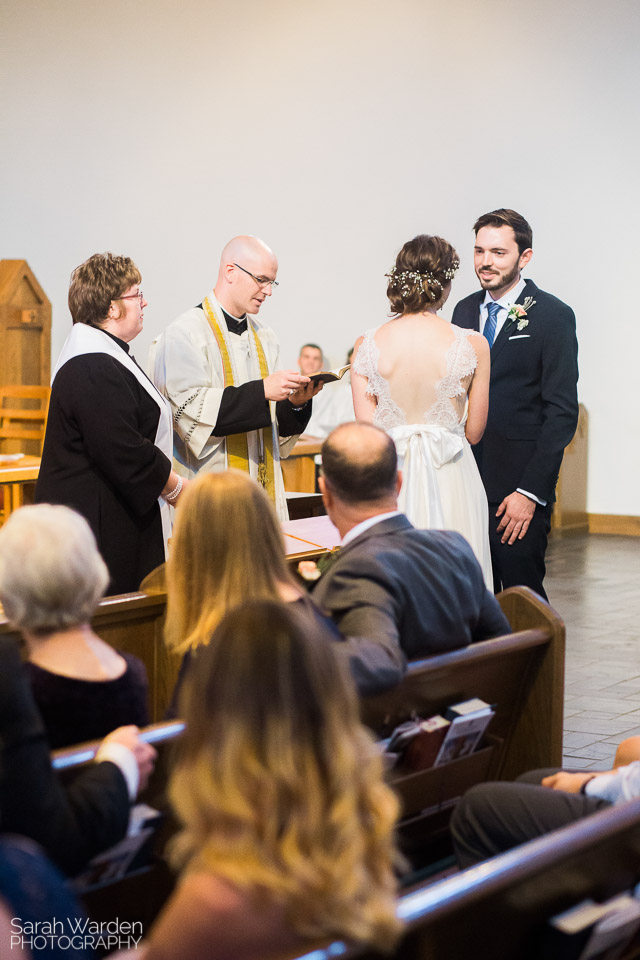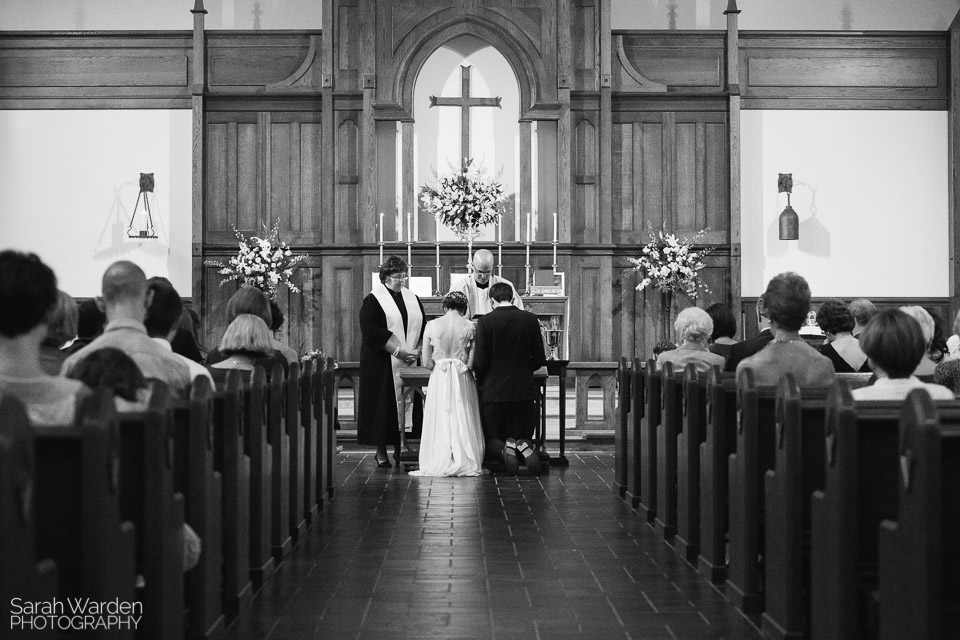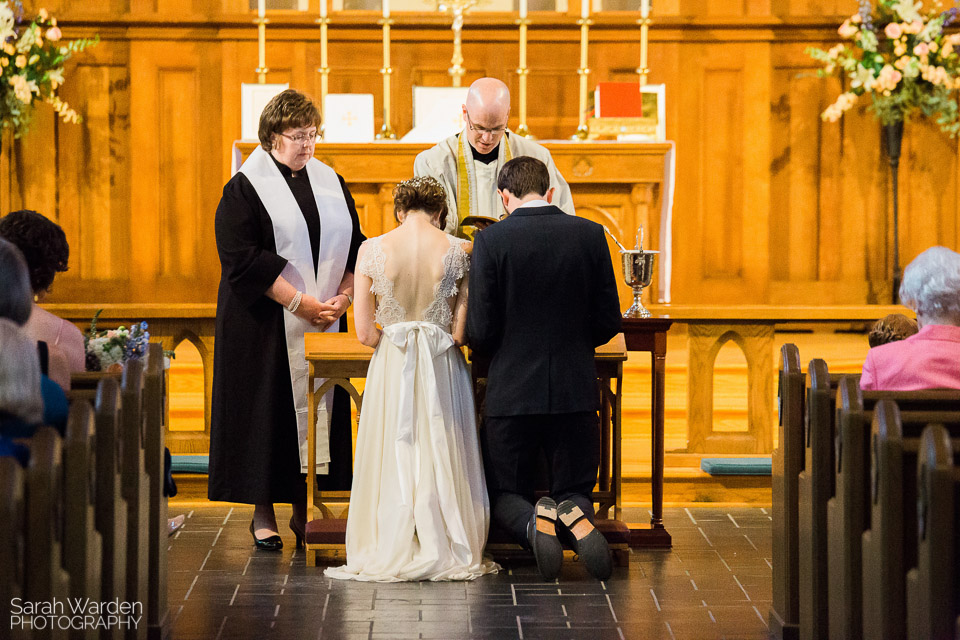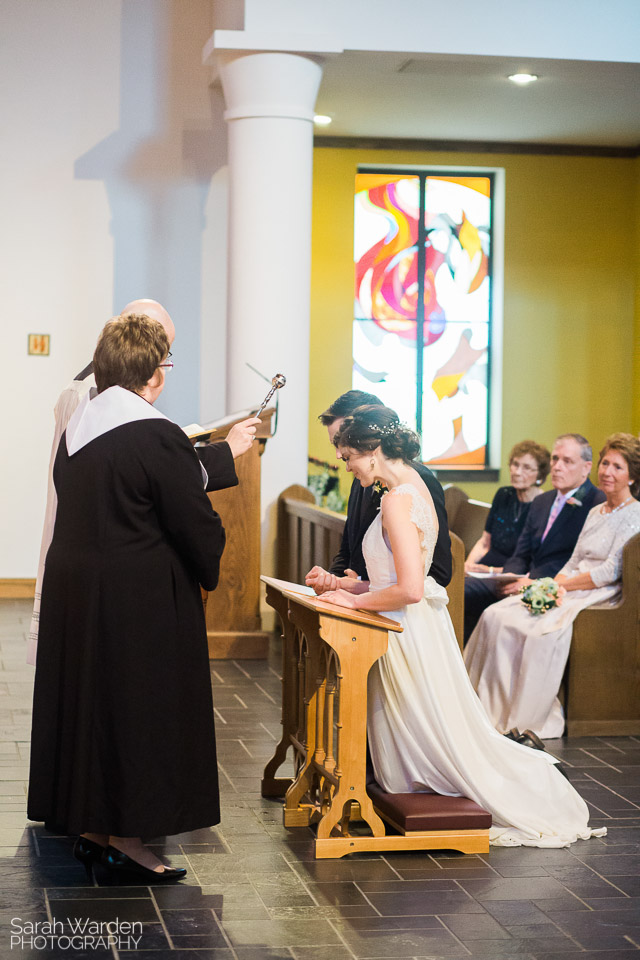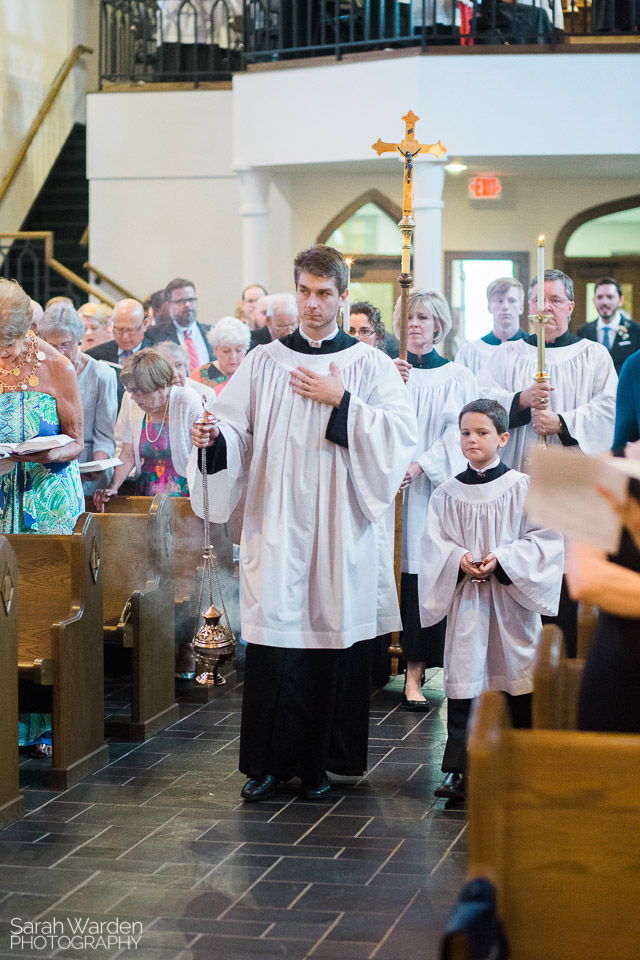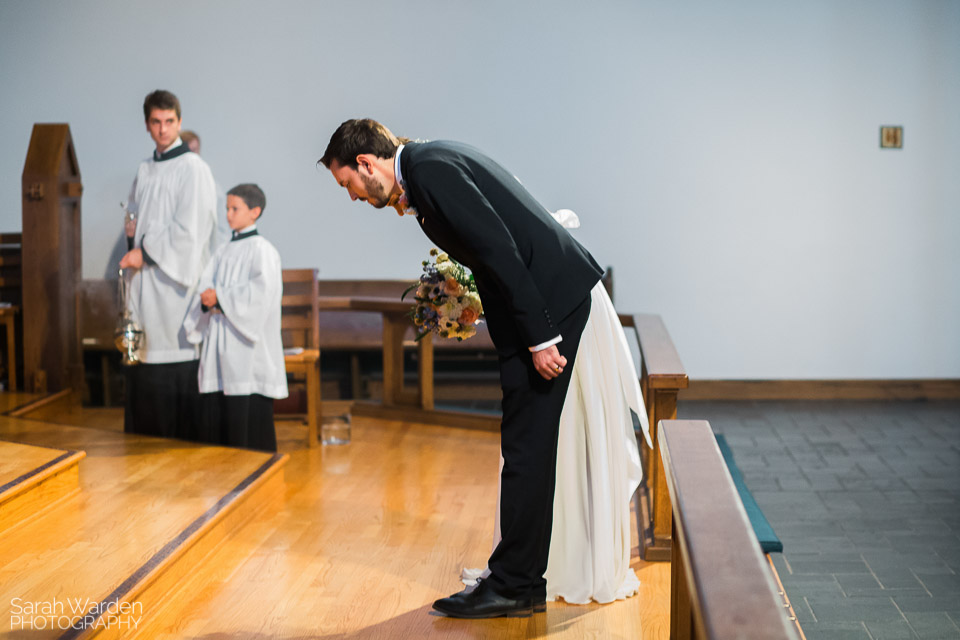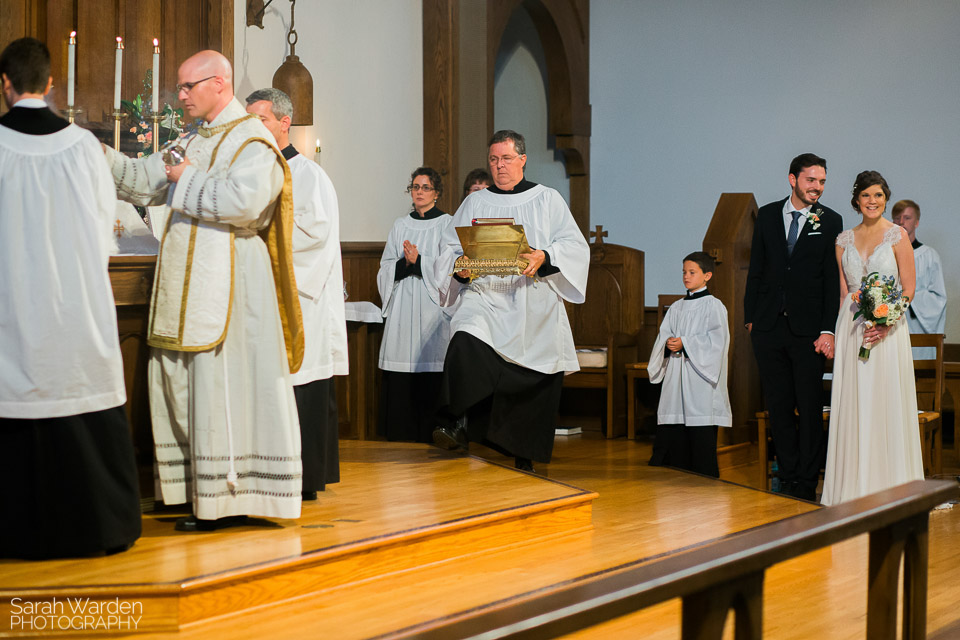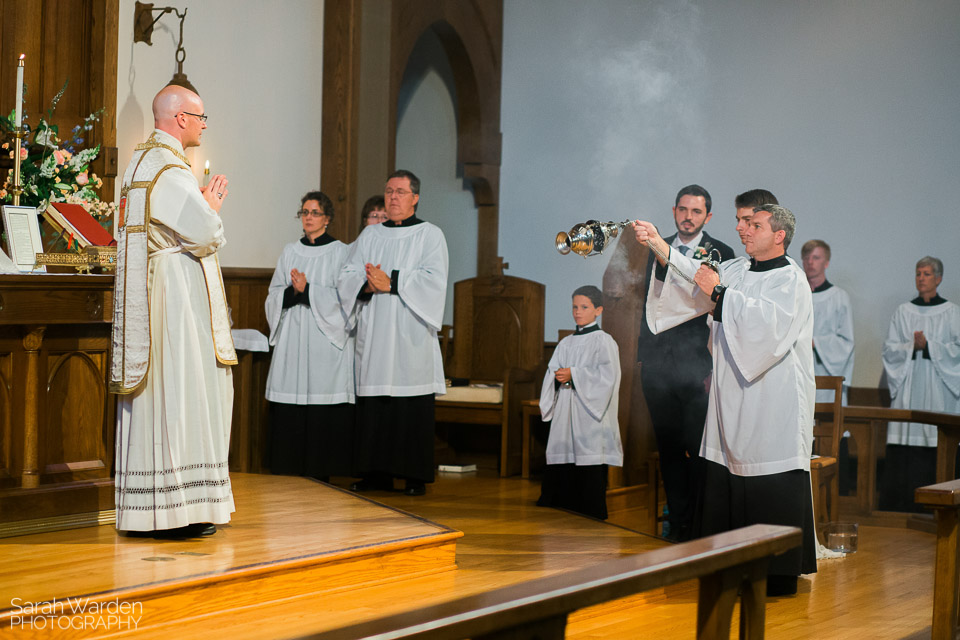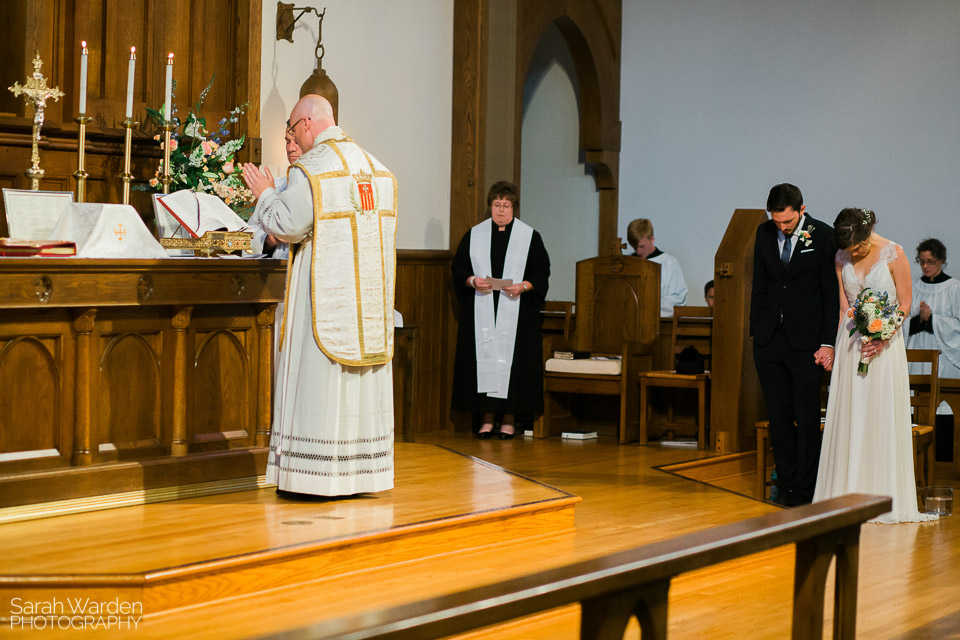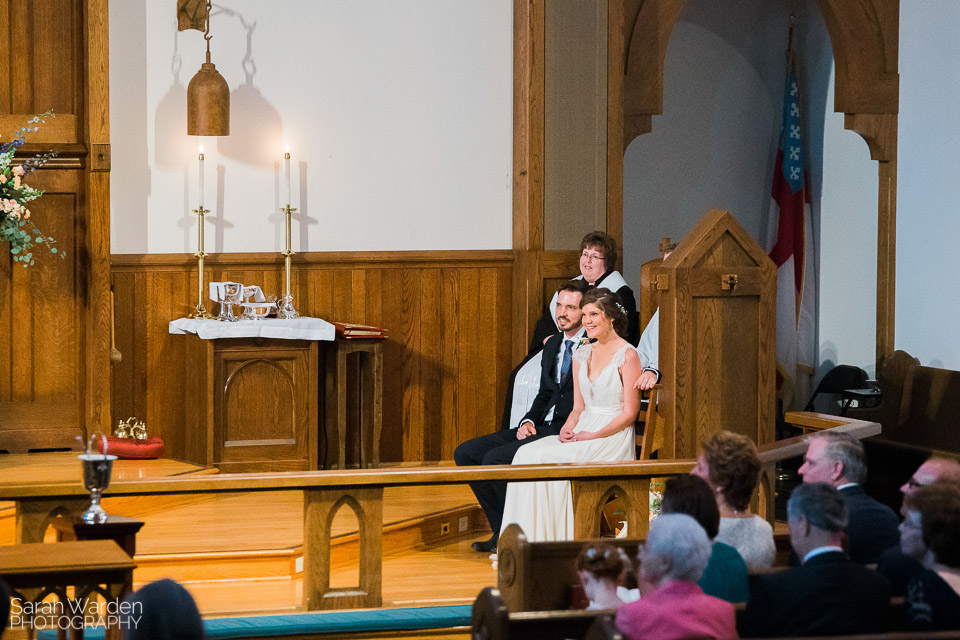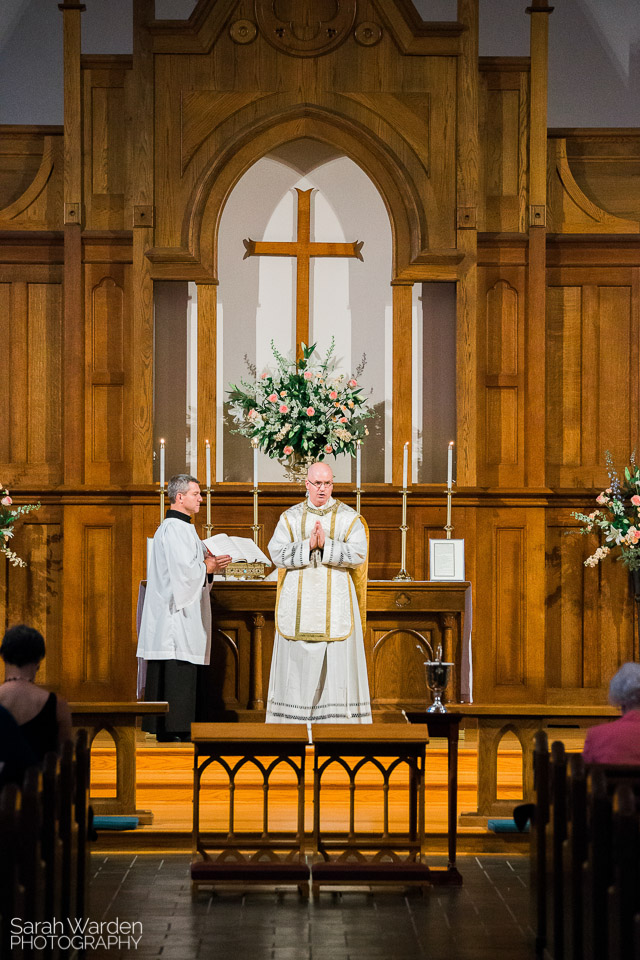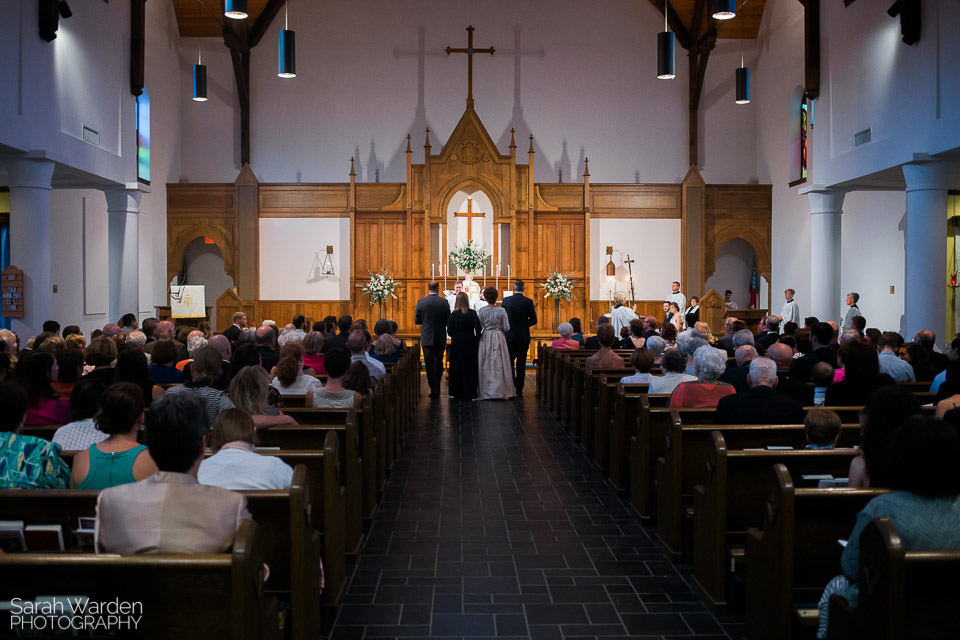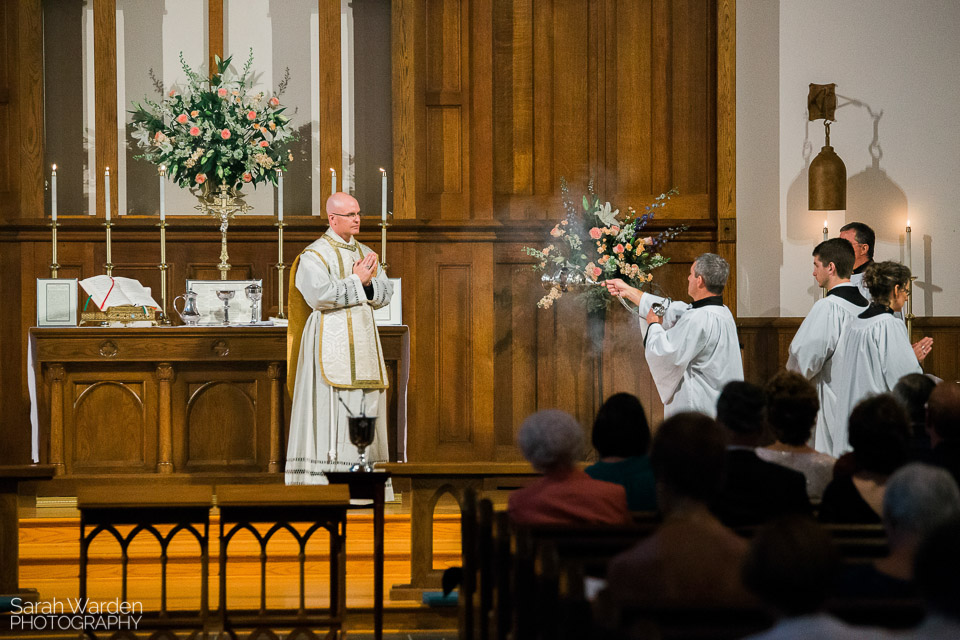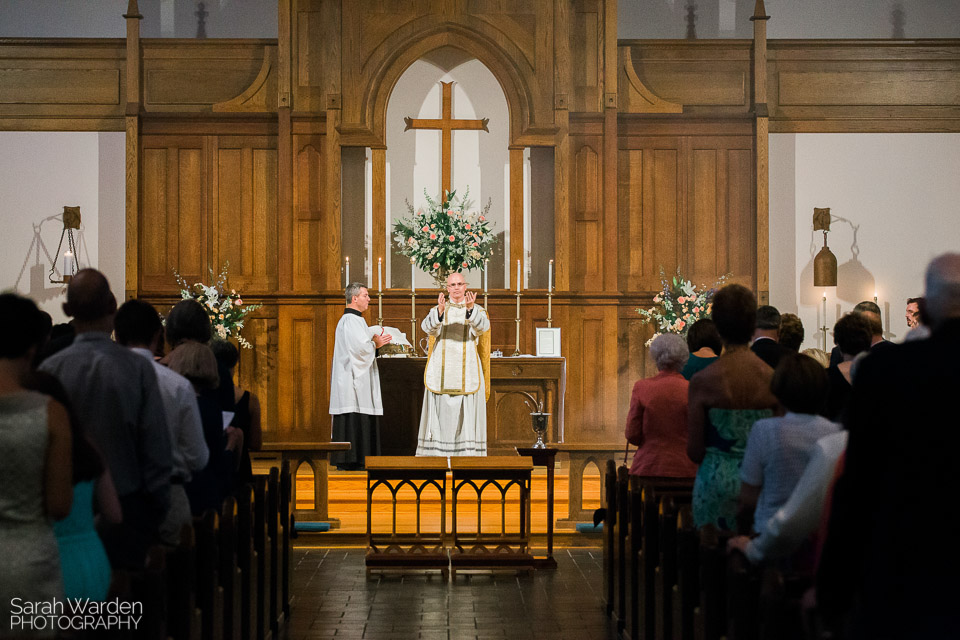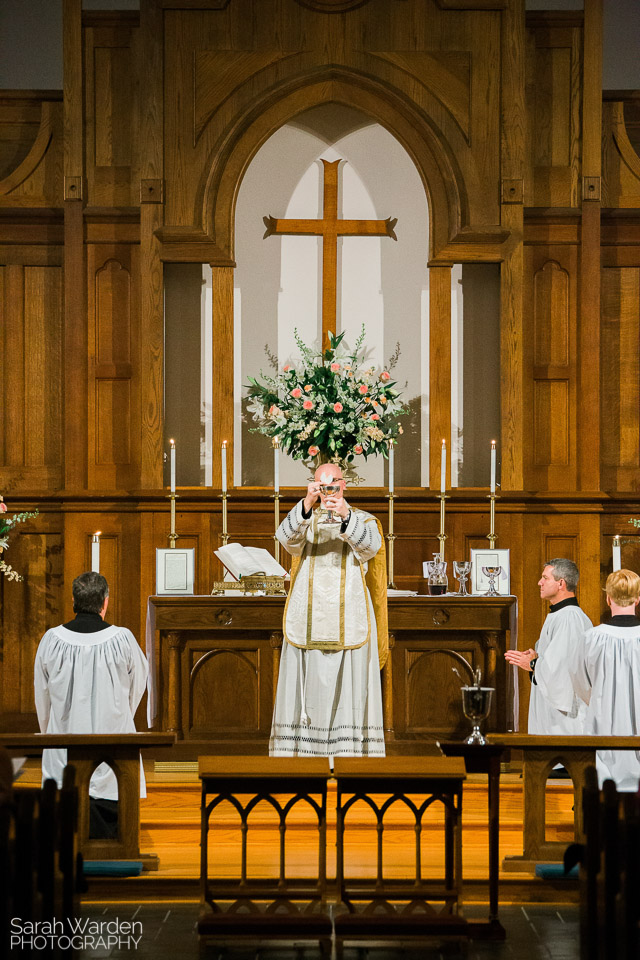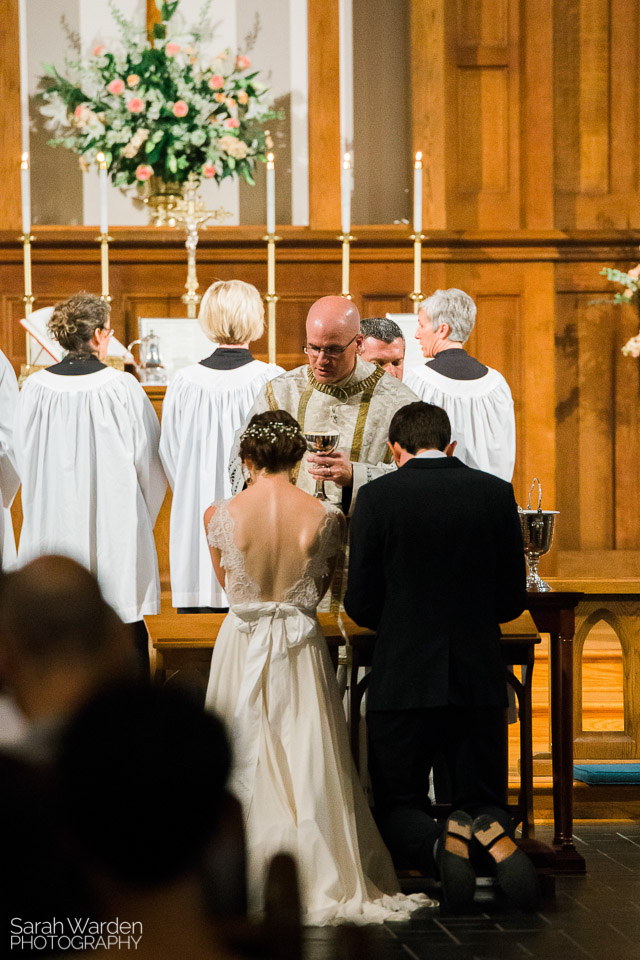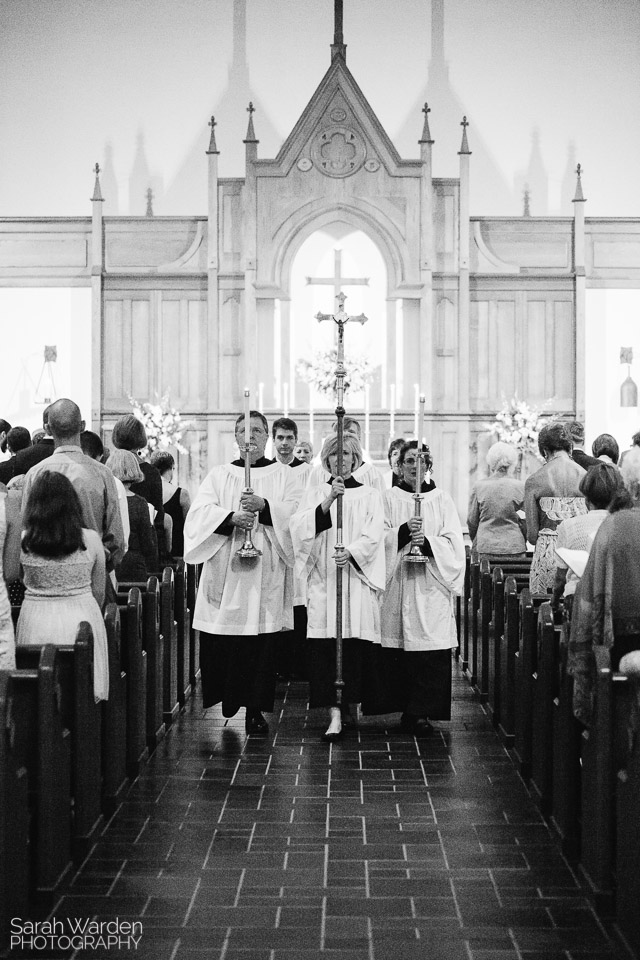Minor Propers for Week of Advent 1, 2017
December 7
Ambrose of Milan - white
December 8
Conception of the Blessed Virgin Mary - white/blue
December 9
Feria in Advent I - violet
Propers for Clement of Alexandria
As a supplement to the 1979 Altar Missal (Episcopal Church)
Date: December 4
Feast: Clement of Alexandria
Color: White
(Psalm and Alleluia: from the Roman Missal, 3rd Edition)
Download Minor Propers
Instagram Christianity
Notre Dame Cathedral in Paris has been high on my bucket list for some time. I have always wanted to see the rose windows and those dramatic flying buttresses on the east end of the building. Two weeks ago I had the opportunity to spend the day in Paris before flying home to North Carolina. Knowing that I had only a day and that the energy in my tank was running low anyway, I prioritized my exploits, with the Cathedral of Notre Dame first. I shall never forget turning the corner and seeing the west facade with those twin towers rising above the Seine. Finally, I was here. Bucket List box checked.
In front of the Cathedral is a vast paved courtyard. Hundreds of people were queued up to enter, with the line snaking around the borders of the courtyard. I had come all this way and was not going to let a long line stop me now. Fortunately it was moving at a fair clip. There is no cost to enter the Cathedral and security officers were simply checking the contents of bags. I knew the wait wouldn’t be long. The line provided me an opportunity to study the west facade of the cathedral and to study the people around me. There was an American family in front of me. They had been traveling all over Europe (a la the Griswolds) and Paris was one of their stops. A French couple was behind. Since my French vocabulary begins and ends with the word “toilettes,” I have no idea what they were saying.
But then there were young people taking pictures of themselves in the middle of the courtyard. There was one couple in particular that grabbed my attention. They were young, probably early twenties. Her clothing barely covered all the necessary areas and he was carefully dressed in white shorts, shirt, and baseball cap turned backwards. When he snapped a photo of her in front of the cathedral from his cell phone, I didn’t think anything of it. I, too, would have liked photo in front of a Bucket List stop. But it didn’t stop with one picture. She was posing. I’m not sure how to best describe it. She wasn’t posing with just her smile, she was posing in dramatic positions as if it were a spread in Vogue. And then she would walk over and look at them. She the gave her paramour directions on how to take the picture. She’d pose, and then look at the phone. Then it was his turn. He posed. Straight on. Turned to the side. Looking over his shoulder. Look at the phone, rinse, and repeat. I look around and noticed many couples doing the exact same thing. Later I went to Instagram and searched for Notre Dame Cathedral and there, collected in one place, were thousands of pictures of young people posing in front of this Cathedral.
It struck me that these individuals had no intention of getting in line and going inside. They did not and, chances are, would not ever know what the rose windows looked like from the inside. They did not see the crown of thorns in the apse. Instead, they remained outside in front of one of the greatest monuments to prayer ever built, a building designed so that human beings would lose themselves in the presence of God. Unfortunately they were missing the presence of God through a lens focused on themselves.
Instagram Christianity is a real temptation. Instagram Christianity is one that is lived for the approval of others and depends upon “likes” and comments. It is posed and the instruments of the faith are there as background instead of what actually grounds us. Instagram Christianity is to spend a few minutes in the courtyard and never actually enter the heart of the matter. Instagram Christianity loses God in ourselves instead of losing ourselves in God. How do we counter this? After all, standing in line to enter the church is far more inconvenient than metaphorically snapping a picture in front of it. I think the fact that there was a line to enter was hopeful. Clearly there were more people wanting to go inside than those posing outside. The line of people was an act of witness that what awaited us was worth it. This is why consistent attendance by the faithful is such an important witness. The best restaurant is the one with the long line because we know it must be worth waiting for. If we create a line to St Timothy’s we are not only receiving the sacramental formation and grace from our worship but we are also making a statement that this is worth queuing up for. This two hour sacrifice on Sunday is a joy. We are free by losing ourselves to God instead of losing God in ourselves.
As critical as I was in the moment outside the Cathedral, I was also reminded that of all the places in Paris they could be - and there are many - at least they were there. But what drew them? Beauty. Notre Dame is breathtaking. It doesn’t matter if you are faithful or faithless, you cannot argue with the draw of beauty. It is ethereal. I am convinced through the witness of the Church that beauty is one of the greatest evangelistic tools God has given us. Our worship, our building, our faith is and should be one of beauty. These couples may have been standing outside drawing attention to themselves, but maybe they will return. And perhaps this time, with the witness and invitation of a long, faithful line, they will queue up and enter. And once they are inside, they will lose their breath. And in losing their breath, will lose themselves, and find the presence of the Lord Jesus.
The Vigil of Pentecost
Originally published in 2015, slight edits have been made.
“This is the night.”
Eastertide is dramatically ushered in with the kindling of the new fire, the lighting of the Paschal Candle, and the Exsultet proclaiming that this is indeed the night of salvation through the Resurrection of Jesus Christ. The Easter Vigil is rich in mystagogical ceremony. Themes of darkness into light, the readings of the ancient prophecies, and the blessing of the baptismal font point not only to Christ’s Resurrection, but our inclusion in this mystery that brings us from darkness to light and from spiritual death to spiritual life. Even though the Easter Vigil is not widely attended by the laity in the majority of parishes in the Episcopal Church (or even observed in many parishes) it is still the climax of the Church Year.
The beginning of Eastertide is clear. When Eastertide ends has been another matter. On one hand, that statement is absurd. Eastertide is fifty days and thus ends on the fiftieth day. But on the other hand certain traditions, such as extinguishing the Paschal Candle on the Feast of the Ascension and the observance of an octave after Pentecost has the real potential of inserting confusion as to when Easter actually ends. For instance, if Eastertide begins with the kindling of the new fire and the lighting of the Paschal Candle, does it end when that candle, which has burned the whole season, is extinguished? If Eastertide ends on the Feast of Pentecost, fifty days after Easter, is it still Eastertide during the octave of Pentecost?
Paul Bradshaw notes that this tension is not new and that in the 4th century, some places celebrated Ascension and Pentecost together on the fiftieth day. Presumably this makes the issue of when one extinguishes the Paschal Candle (if it was used) moot.[i] A century later, a separate celebration for the feast of Ascension emerged on the fortieth day and “thus the original unity of the fifty-day season was gradually broken down.”[ii]
This gradual loss of unity is important and has resulted in the diminishment of the celebration of Pentecost and its baptismal character. St Augustine is said to have preached “See how the solemnity of the Pasch has reached its conclusion without losing any of its splendor. The Pasch is the beginning of grace, Pentecost is the crown.”[iii] Pentecost is the second greatest feast in the Church Year, but I would doubt that the laity would see it as such. For that matter, I doubt many priests would see it as such. In many places Pentecost has been reduced to an occasion for the laity to wear red, release balloons of the same color, and have picnics. The birth of the Church is marked by cake and not the Paraclete. This hasn’t always been the case and there is no reason why it should continue. For Episcopal Churches, the true nature and celebration of Pentecost can be recovered in part by the recovery of the Pentecost Vigil. Recovering the Vigil would not only recover Pentecost as a major feast but would also repair the break in Eastertide’s unity.
The Vigil of Pentecost
Gregory DiPippo, in an excellent work on the Holy Week reforms of Pius XII, mentions the development of the Pentecost as day of baptism that evolved to mirror the rites of the Easter, including the vigil.[iv] The Pentecost Vigil did not include the lighting a new fire or blessing of the Paschal Candle, but there was a shortened reading of the prophecies (six instead of twelve) and the blessing of the font with the litany.
The 9th Edition of Ritual Notes, which must be mentioned as the inspiration for this blog, includes the Pentecost Vigil. The “Naughty Ninth” gives instructions for the reading of the prophecies in a way that was similar to the Easter Vigil, the lighting of the Paschal Candle, and the blessing of the font.[v] The 11th Edition, reflecting the Pian reforms, does not.
The 1979 Book of Common Prayer not only restored the Easter Vigil but it also provided a very loose framework for the Pentecost Vigil on pages 175 and 227. A full liturgy is not provided nor is the celebration of the vigil expected (“When a Vigil of Pentecost is observed..”).[vi] The few rubrics that are given direct the celebration to begin with the Service of Light on page 109 followed by three or more readings appointed for the day. Instead of a collect to follow each reading, as in the Easter Vigil, a psalm, canticle, or hymn is to follow. Nine readings are provided for the Easter Vigil prophecies, but only seven readings total are given for the entire Pentecost Vigil. Presumably, the first four are for the prophecies. The old Roman Rite (and the 9th Edition of Ritual Notes) directs the 3rd, 4th, 11th, 8th, 6th, and 7th Easter Vigil prophecies to be read at the Pentecost Vigil. Only the 8th 1979 Prayer Book Easter Vigil prophecy (Ezekiel 37:1-14) is included in the Pentecost Vigil readings. After the prophecies, the Prayer Book directs that Baptism, Confirmation, or the Renewal of Baptismal Vows is to follow the sermon. This is the extent of the Pentecost Vigil in the Prayer Book. This is also the extent of my experience of the Pentecost Vigil. Before 2015, I had not attended or celebrated a Pentecost Vigil. What does, or rather what should, the Vigil look like?
A Reflection on The Pentecost Vigil in the Parish
We began the liturgy with the Easter acclamation followed a blessing of light composed by Canon Jeremy Haselock, one of the primary authors of Times and Seasons in Common Worship. This was important as the liturgy needs a blessing of light that is more robust than an ordinary luncinarium, as the Pentecost Vigil is no ordinary service of evening prayer. However, to ensure the liturgy is a Prayer Book liturgy, and this is important for us, we also used one of the Prayers for Light on page 110. After the blessing we lit the Paschal Candle from the flame of the sanctuary lamp and then from the Paschal Candle, we lit the candles on the altar and the hand candles of the people.
One practical question that emerged was how do we light the Paschal Candle? The New Fire had already been kindled at the Easter Vigil and to strike flint in a dramatic fashion would be too similar to what happened fifty nights earlier. Since the church is meant to be dark but Christ’s Sacramental Presence is not absent, as in the case for the Easter Vigil, we used the flame from the sanctuary lamp. Using the sanctuary lamp to kindle the Paschal Candle was a statement that Christ’s Sacramental Presence continues to enlighten us and, in fact, illuminates the life of the Church.
As the candles were lit, we sang the Gloria in Excelsis as permitted by the rubrics on page 175. We used the Pentecost introduction from Common Worship and the accompanying short litany. The Prayer Book collect for Pentecost followed next and then we continued with three prophecies accompanied by a psalm or canticle.
The Prayer Book does not have a formal rite for the blessing of the font but the blessing is implied in the Altar Book rubrics at the Easter Vigil. We blessed the font and baptismal water in the same way as at the Easter Vigil. After the Renewal of the Baptismal Vows, the people were sprinkled as the procession returned to the altar. From there the mass continued as usual with the Peace.
The Pentecost Vigil, as a near mirror of the Easter Vigil, is powerful. The same elements that are formative in the Easter Vigil are present for Pentecost. Of particular not, however, are the prophecies. We selected Genesis 11, Exodus 19 and Ezekiel 37: the Tower of Babel, the Giving of the Law, and the Valley of the Dry Bones, respectively. The Genesis reading was especially meaningful as Pentecost is the anti-Babel. Whereas God gave multiple languages to divide the people, the Holy Spirit gave the gift of tongues to unite His people. The Exodus reading brings to the giving of the Law. Pentecost is the gift of the Holy Spirit. Ezekiel prophesied of the giving of life to dead, dry bones. Pentecost is the realization of such a promise.
For a full observance of Eastertide and its power, and for a renewal of Pentecost as the second most important feast of the year, the Pentecost Vigil can also give new life to dry, dying bones.
[i] Paul Bradshaw, Early Christian Worship, 85.
[ii] Ibid.
[iii] Roger Greenacre and Jeremy Haselock, The Sacrament of Easter, 153.
[iv] http://www.newliturgicalmovement.org/2009/04/2009-compendium-of-1955-holy-week.html#.VXZCsFzBzGc
[v] Ritual Notes, 9th Edition, 180.
[vi] Book of Common Prayer (1979), 175.
The Good, the True, and the Beautiful: Meditations for a Lenten Quiet Day
These meditations were given at St Stephen's Episcopal Church, Providence, Rhode Island on March 18, 2017. The handout for the meditations may be downloaded here.
First Reflection
I
Two weeks ago the whole world heard a speech that was delivered before two important bodies. This speech has been widely reported to have been full of “alternative facts,” deception, and unparalleled hubris. Clips from this speech are played over and over again and people are still talking about it. And if I had to guess, they will be talking about it for a long time. Of course I am referring to the First Sunday in Lent and the first lesson from Genesis. The serpent delivered the speech. The two bodies being Adam and Eve, and the alternative facts and hubris coming from the distortion of God’s command to Adam to not eat the fruit or touch the Tree of the Knowledge of Good and Evil.
Perhaps long relegated the domain of the quaint and childish in our memories, I think we oftentimes hear this story with images of cartoon drawings of Adam and Eve wading through lush vegetation with strategically placed locks of hair, Eve holding a Red Delicious Apple, while a suspicious looking green snake drops down from the branches, speaking through his forked tongue the lies about God, death, and wisdom. I think this story deserves and demands constant revisiting. My invitation today is that we work through those childhood memories, as formative as they might have been, and give this story perhaps more weight than it might have held for us. My invitation during this Quiet Day is that we listen to what happened, see how it informs our current plight as Christians, and finally, see how it is all brought together in the Liturgy for Good Friday.
I’ve given you a copy of Ruben and Breughal’s vision of the Garden of Eden. I like this version not only because it has just about every exotic animal you can think of in the foreground; peacocks, lions, tigers, monkeys, turtles, there’s even an alligator just under the cow on the right side, but I also like it because it shows the Garden of Eden on a much larger scale than our childhood Bible story books. The Garden stretches for miles and the tree tops go as far as we can see. I like this because it reminds us that the tree in the center of the Garden, the Tree of the Knowledge of Good and Evil, wasn’t the only tree there. In fact, in this painting the tree is lovely, but we don’t get the impression that it is remarkably so. The trees around it are perhaps just as impressive.
This helps focus our attention as to what was really going on. It wasn’t as if Adam and Eve were famished and circled the forbidden tree like vultures waiting on a wounded animal to breathe its last. In fact, this tree apparently wasn’t an issue for Adam and Eve before Chapter 3. So it took the initiative of the serpent to call their attention to the tree and its fruit. The serpent changed their focus. Is this not the definition of temptation: the invitation to look away from heavenly things?
The serpent asked Eve to take another look at the fruit of the tree and when she did, she noticed that it was “good for food, and that it was a delight to the eyes, and that the tree was desired to make one wise.” It was good. It was beautiful. It offered truth.
The good, the beautiful, and the true are among the classic transcendentals of ancient philosophy. As transcendentals, they are universal forms that transcend categorization. They are objective realities that are not beholden to our subjective whims.
Plato focused on the good as the highest form. Aristotle elevated beauty. Demosthenes held a lantern and searched for an honest man; he elevated the true. The good, the beautiful, and the true are not simply philosophical ideas, they find their origin and their perfection in God. God alone is Goodness. God is Truth. God is Beauty. And if there is anything here in this life that we can call good or true or beautiful, it is only because it participates in the life and light of God.
Today I would like us to consider these transcendentals. I would like us to consider them in Eden, in our current context, and on Good Friday, which will be the roadmap of these Quiet Day reflections.
II
I started to think seriously about the good, the beautiful, and the true, after hearing Roman Catholic Bishop Robert Barron address the transcendentals in his call for renewed evangelism, especially as we see a rise in New Atheism. I think getting comfortable talking about God requires that we get comfortable thinking about God. We need to challenge ourselves and go deeper. We need to know our own story and lift it higher than the felt-board Sunday School class lesson and see the confidence the story has in itself, because it is inspired by the Holy Spirit. The Gospel isn’t afraid of the hard questions and challenges. The Gospel isn’t afraid because it isn’t threatened.
Bishop Barron, at least for me, has brought the good, the true, and the beautiful to a new time. I think meditation on these transcendentals will open up new avenues for our own faith and give us the intellectual confidence and good pastoral sense to engage others to invite them to know and love the Lord Jesus.
If I wanted to talk about the truth of God, or the story of the Fall of humanity and the realities of sin, I might have your attention, but I wouldn’t have the attention of someone outside the Church, of whom we are especially concerned. But if I give you a print of Ruben’s Garden of Eden and asked you to tell me what you see, then we have the beginnings of a real conversation. In doing this we make beauty the door for the good and the true. If we were to leave this church and go out on the campus of Brown and start telling people who walk by what was good, immediately their defenses will raise. “Who are you to tell me what is good?” The same thing would be, and perhaps to a greater rancor, if we dared to tell people what was true. “What is true for you is not true for me.” Shields are raised and there is no conversation and oftentimes there can be no conversation without an agreed point of reference, universals, and vocabulary. We shout past one another. But if we invited them to come into St Stephen’s and examine the art in this church, we might get some polite no-thank-yous, but we would get some takers. Some would come into the church and look out of curiosity or appreciation for what is beautiful.
I notice on social media when friends of mine, who I know for a fact are not religious, travel to Europe, they will visit churches. Not because they have a desire to pray, but because they are drawn by beauty. You can’t go to Barcelona and not see La Sagrada Familia. You can’t go to Rome and not visit St Peter’s Basilica. You can’t go to London and not visit Westminster Abbey. These are structures that are built with and on faith. They contain the Good, the True, and the invite with the Beautiful.
But what makes something good, beautiful, or true? On one hand, and I’m sympathetic to this position, we can borrow a line from Supreme Court Justice Potter Stewart in 1964 and say with conviction, “I know it when I see it.” That may very well be the case, but meditation on and exploration of the meanings and definitions of the transcendentals not only raises our appreciation for them, but they invite us closer to Our Lord, which is, after all, their design.
I also think serious examination of the good, true, and beautiful is needed to counter what is giving our nation and world great anxiety at the moment. We can’t agree on what the truth is. As much as we may poke fun at terms like “alternative facts” and “fake news,” they do identify suspicions and tensions that certain pre-date the current political environment. We can’t agree on what is good. We can’t agree on what is good for the nation or good for individuals. And there’s not so much a disagreement about beauty as a rejection of it. Poetry has been replaced by Twitter. My 12-year-old daughter and 8-year-old son are not taught how to write in cursive. Churches that took generations and patience to build are thrown up in weeks with steel and stucco. The fabric of the building proclaims the genius of quick fabrication more than faith.
My claim is that redirection of Eden continues today. I’m not talking about the Fall in general, of course, that still continues today. Rather, I’m talking about the re-direction away from the good, the true, and the beautiful that leads us on a wild-goose chase away from our intended destination and purpose of beatitude into the emptiness of self-deceit.
Sir Ninian Comper, whom I love, once asked, “Is there such a supremacy of goodness, beauty, and truth in the present age as to mark it as distinct from the past, and demand that we invent a new expression of it?” He wrote that in 1939. He could not foresee what was to come. He could not the Second World War, with its assault on of the good, the true, and the beautiful. He could not see ISIS and their atrocities against human beings. Their casualties are not only human lives, but also literature, art, and hope in the goodness of humanity.
I don’t think I’m being too dramatic or overstating my case. The good, the true, and the beautiful are attributes of the Ever-living God. They are like God’s fingerprints, which are indelibly imprinted on our souls and all of creation. If we are looking for God, the good, the beautiful, and the true make up the powder that exposes the prints. The more we pursue what is good, true, and beautiful, the clearer God’s mark becomes for us. Likewise, the more we reject, rebel, or try to refine the good, the beautiful, and the true, the more we forget who and whose we are.
Think about the following petitions in the Litany of Penitence on Ash Wednesday:
Accept our repentance Lord, for the wrongs we have done: for our blindness of human need and suffering, and our indifference to injustice and cruelty. Put another way: accept our repentance for not doing good.
From all false judgments, for uncharitable thoughts toward our neighbors, and for our prejudice and contempt toward those who differ from us. Or: accept our repentance for not being true.
For our waste and pollution of your creation, and our lack of concern for those who come after us. In other words: we have vandalized beauty.
The petitions continue: Restore us, good Lord, and let your anger depart from us…accomplish in us the work of your salvation…by the cross and passion of your Son our Lord.
Our anthropology is rooted in the corruption of the good, the true, and the beautiful through our redefinition. Our hope is the refocusing of the good, the true, and beautiful through the person of Jesus Christ. The first day of Lent not only describes the condition, but it looks toward the remedy – by the cross and passion of your Son our Lord.
III
Let’s go back to the garden. What was so wrong with Adam and Eve wanting to know the difference between good and evil? The answer is not that God wants to keep things from us but that God wants us to be free from the burden of having to discern what is good from evil. God himself is Goodness and if and when we dwell in him, we trust his words to be good and we trust that what is contrary to his words are evil.
God wanted Adam and Eve to enjoy him and to be freed from any burdens that would take their focus away from him. He wanted them to be more and to continue to grow in his presence and love. Adam and Eve choose freedom of indifference over freedom for excellence. Eve saw that the fruit was good for food, a delight to the eyes, and the tree was desired to make one wise. She wanted the things of God on her terms.
They reached for what was good. But the goodness of God is given and not to be grabbed. They reached for what was true, but gave in to deception. They desired what was beautiful, but they ended sewing fig leaves to cover the most beautiful of God’s creation. They missed the mark of the good, the true, and the beautiful. “Missing the mark” is the definition of harmatia, the Greek word used nearly 200 times in the New Testament for sin. “For all have missed the mark and fallen short of the glory of God.”
All humanity desires the good, the true, and the beautiful, which is to say all of humanity desires God. But in our efforts to know the good, the true, and the beautiful, we miss the mark. We grab. We deceive. We cover up. Instead of embracing true freedom, the freedom we have in Christ, we enslave ourselves by demanding total autonomy.
If I may suggest, during the quiet time that follows, look again the painting by Rubens and ask yourself why is it, when we have everything we need and our cup overfloweth, that we insist on looking and reaching for what is forbidden. What voices ask us to change our focus?
When we come back, we’ll look closer at the good, the beautiful, and the true. Until then, ask yourself how you define those terms. What makes something good? How do we know what is true? What does it mean for something to be beautiful? And why would any of this matter?
Second Reflection
I
The Good.
Last Friday at Evening Prayer, the appointed psalms were 53-55. Psalm 53 famously begins “The fool has said in his heart, there is no God.” This verse was the launching point for St Anselm as he worked out his so-called ontological argument for the existence of God. If the fool says in his heart there is no God, then the fool acknowledges what we mean by God. The fool understands what that word means. Otherwise, there could be no rejection of it.
Sometimes I wonder if we have an easier time understanding what is meant by God, as in the Creator of the Universe, the Ground of All Being, the Beginning and the End, than we do his nature. The first prayer I ever learned was at the dinner table. “God is good, God is great, let us thank him for our food.” I later learned that we said it wrong and messed up the rhyme, but that’s how I remember it. God is good. In the Black Church tradition, the ubiquitous call and response is God is good, all the time. All the time, God is good.
What does it mean that God is good? What is good? The next line in Psalm 53 is “All are corrupt and commit abominable acts; there is none who does any good. God looks down from heaven upon us all, to see if there is any who is wise, is there is one who seeks after God. Every one has proved faithless; all alike have turned bad; there is none who does good; not, not one.”
God is good all the time, but we are corrupt and commit abominable acts. I think an important distinction needs to be made here. Notice the psalmist doesn’t say “there is no one who is good,” rather he says, “there is no one who does any good.”
Back to Genesis and the Creation story, we are told again and again that everything God made was good. The day, the night, the stars, the cattle, the creeping things, the flying birds, the vegetation, and the sea monsters, they were all good. And the pinnacle of creation, the finishing touch of creation, was man. And it was good. As created by God, we are in our nature good. Everything created by God is good, without exception. There is no Platonic dualism here. The material world is not inherently bad; it is good. Evil is not the presence of something, it is the absence of the good. So the psalmist is, course, absolutely correct when he makes the distinction between being good and doing good. We are good because we are. We do not do good because we fail to do what God made us to be.
Good is everywhere in the Bible. From the Creation story to Jesus identifying himself as the Good Shepherd. I used to think that the God was selling himself a bit short by saying creation was good, or when Jesus said he is the Good Shepherd. Shouldn’t he raise the bar just a bit? Wouldn’t it have been more accurate if God looked at creation and said this is great! Or this is superb! My 12-year-old daughter is learning the viola and she has an orchestra competition coming up soon. On the way to school the other day she was giving me the different categories of judgment for their performance. If I remember correctly, it was poor, fair, good, excellent, and superior. Good is in the middle. It seems and suggests average.
But that doesn’t work in the table blessing prayer, does it? God is average, God is better than average, let us thank him for our food (which depending on who prepared it might be poor, fair, good, excellent, or superior!).
So we must assume God is not trying to be falsely humble and that “the good” implies something far more than average. Aristotle began his Nicomachean Ethics by asserting that everything is done for some good. Therefore the good is that which all things aim.
Since you are here today, you are here in hopes of some good. Maybe that good is a deeper connection to your Lenten disciplines. Maybe that good is deepening of your faith. Maybe that good is to get out of the house. Whatever it is, we do not do things to bring us closer to a greater evil, but to a greater good. Right? Even those things that end up being evil were initially begun with the hopes of the good. “The road to hell is paved with good intentions.”
Thomas Aquinas says that the good is perfection. It is the intended end of a thing. And the closer we get to perfection, the more we can say that something is good. So the reason why all things aim or point to some good is because we in our very nature are created to see our creator. I have three children and I’ve been blessed to be present and active at the birth of all three, an amazing and terrifying experience. Each time I am amazed at how unnecessary I really am during the event. As much as I would never want my wife to give birth without the doctors and nurses (my wife is a Labor and Delivery nurse herself), I am also amazed at how really unnecessary the medical staff is during a routine birth. That child is going to come out. The mother is going to push. No instructions are needed. And when the child comes in the daylight, she is hungry and she instinctively knows how to suck and swallow, even though she has never done it before. It is a short, but important journey up her mother’s body to gaze into the eyes of the one that gave her life in the womb and will give her life from her breast. We are created to know our Creator. We long for the good because God alone is truly good. God alone is perfect.
Aquinas said that for something to be perfect, it needs to exist, need no auxiliary attributes, and fulfill its purpose. Especially during Lent, I find myself craving steak. What is a good steak? It’s one that exists, for a steak that is on my plate is far better than one that only exists in my mind. A good steak needs nothing to help it. It doesn’t need to be heated up or cooked longer or A.1. Steak Sauce. And it fulfills its purpose, in this case, it fills me up. If we have those things present, we end the meal with great satisfaction saying that was a good meal.
God is the ultimate good because he alone is. He is existence itself (all things came into being through him and without him not one thing came into being). He is wonderfully simple, in that nothing needs to be added. And he is the beginning and end of all things. He is perfect. He is good.
St Catherine of Sienna said, “Be who God meant for you to be and you will set the world on fire.” To be good is to exist and we exist by the grace of God. We are good when nothing else is required. This happens when we truly and completely rest in God, for we need nothing else. And we are good when we reach our end, to be happy in the love of God.
Being who God meant for us to be is to grow in goodness. That’s not a simple reduction into simply doing good works, but rather a journey toward beatitude, blessedness. Happiness that is only found when we rest in the love of God.
This, I think, is a helpful understanding of good. The good is always connected with the divine purpose in mind. Creation was good because it reflects the glory of God, that’s tis end. The same is true for us, as the crowning achievement of God’s creation. But our acts are good when they bring us to God and proclaim God’s love.
That gives us reason to pause and consider what we think is good. If I spend the night at the homeless shelter just so I can brag about it on social media, was that act good? It certainly helped the homeless, but did it help us? Am I brought closer to God and do I have a better understanding of beatitude? Or if I give ten percent of my income to St Stephen’s (and I thank you on behalf of your rector) only so I can write it off on my taxes, is that act good? St Stephen’s benefits, but do you?
Was this not what Our Lord rails against every Ash Wednesday in the Gospel? Surely he is not against giving alms or fasting, but if you are going to do it, do it so that it moves your closer to God – to the good.
In the Garden, Eve and Adam took the fruit. It was good for food, but it was not a good act. For instead of bringing them closer to God, it sent them into exile.
We tend to think of the good in regards to what is accomplished in the act and with the object. We are asked to think of the good in regards what it does to us and where it takes us.
No, no one does good on our own, the psalmist is right. But in Christ, he acts in us. Remember what St Paul said, “It is not longer I that lives, but Christ who lives in me” (Galatians 2.20). The more we move closer to him and allow his acts to be ours, the more we live and act in the good.
II
The True
The true is a bit trickier and that is perhaps why we have such a difficult time with it. It would seem that the true would be the easiest of the three transcendentals. We’ve just seen how an act might be good in one way but bad in another, so it’s not always that straightforward. We can anticipate the ambiguity that beauty might bring, as we like to say its definition is in the eye of the beholder. But the true should be obvious. One would think it either is or it isn’t. But we are suspicious.
Think back to all the movies whose plots are built on the fleeting definition of truth. I think of Jack Nicholson in A Few Good Men, “You can’t handle the truth!” The television show the X-Files was loved by fans wearing t-shirts that read “The truth is out there.” The Matrix movies of the late 90s and early 2000s grabbed our attention by challenging what our senses have told us to be true and that maybe we live in a computer-simulated reality. We could easily spend the whole day coming up with and recounting great movies, televisions shows, plays (The Music Man), and novels that tap into this.
We could take a break and walk over to Starbucks and grab a paper and read the headlines and see debates about the truth. Watergate in politics, Deflategate in Sports, Wikileaks, fake news, alternative facts, it depends on what is is, and so on and so on, we are well versed in the battle over the true.
Aquinas said there are two ways something can be true. Either the intellect conforms to the object or the object conforms to the intellect. I think the explanation is easier than the definition.
When the intellect or mind conforms to the object, Aquinas is simply saying that the mind sees the facts as they are. It is what it is. I see you sitting in the chair. My mind conforms – understands – what is in front of me. I know the truth when I conform to the facts. I speak truth when I correctly state the facts. This is known as the correspondence theory of truth; our minds correspond to the facts. I understand we can create some complexities to that, but for today don’t bring them up, after all, this is a Lenten Quiet Day. Let’s just focus on the facts and how our minds conform to them.
The other way for something to be true is when the object conforms to the intellect. Now, this one takes a bit of thought, and I’m going to do my best to make it simple, but I think it quickly makes sense. When I was writing these reflections, I did my best to rub the paint off the delete button. I did a lot of editing, mostly in the form of deleting words, sentences, and paragraphs. I did this because the words on the screen did not conform to the idea in my mind. These reflections existed in my mind before they were on the screen, before they were printed on paper, and before they were given here today. These reflections are true, not in the sense of facts, but of being, when they conform to what pre-existed in my mind.
Or the painter, who looks at the canvas and says, “this is not right.” How can she know it’s not right unless she already knows what it is supposed to be? It’s not true until it matches the form in her mind.
But what Aquinas really got at was that something is true if it conforms to the mind of God. A thing becomes its truest self when it does what God intended it to do and be. You see how the good and the true work together on this? The good is the desire to be perfect, to be what God intended. The closer to get to this, the more we are said to be true.
John Milbank suggests that, according to Aquinas, when we move toward our teleos, our end, we are copying in our own manner. As God is the beginning and end of all things, if we too, move toward our end, which is our perfection, we are conforming to the mind of God. And what is the mind of God but being itself?
Let’s go back to the Tree of the Knowledge of Good and Evil, where we can see the subtlety and wiles of the devil in full display. When the serpent said to Eve that she would not die when eating of the fruit, there was a certain truth there in regards to the facts. When she touched the fruit and took a bite, her life did not end, at least certainly not in the sense that she and we imagined it could. The mind conforms to the facts; she did not die. That was true. But that statement was void of truth in that neither Eve nor the serpent were moving towards their end, their teleos. This was not what God intended, it did not conform to the mind of God and therefore there was no real truth.
So to search for and elevate what is true, we have to first understand our purpose. And we know our purpose by searching the mind of God.
This is where our Lenten self-examinations and visits to the confessional come in. They help correct the redirections from the times we’ve been spun around by sin. The philosopher Seneca said that a sailor without a destination cannot discern a good wind from a bad one. If we don’t know where we are supposed to be, then we can have no idea if we are moving in the right or wrong direction. Confession and self-examination bring us to the truth about ourselves and God when we are shown where we are in relation to where we are supposed to be.
In John’s Gospel, Jesus said, “I am the way, the truth, and the life. No one comes to the Father except through me.” Jesus is the fulfillment of all things. He is the beginning and the end. He is goodness and he is truth.
Then you will know the truth and the truth will set you free, Jesus said. Know who and whose we are, know where we are supposed to go, and burdens and shackles of life fall off. We are free.
In this next time of silence, might I suggest that you ponder your teleos; your intended end? And in doing so, think about your desires and your understanding of the good and how it compares to what Thomas Aquinas is offering. Think especially about your motivations.
Likewise, contemplate what is true. Not only how our minds conform to the facts, but more importantly how we and world conform to the mind of God. What is false? What is true?
What are the things given to us by the Church that helps us do good and know truth?
Cardinal Newman wrote: “It is the saying of holy men that, if we wish to be perfect, we have nothing more to do than to perform the ordinary duties of the day well. A short road to perfection-short, not because easy, but because pertinent and intelligible. There are no short ways to perfection, but there are sure ones… We must bear in mind what is meant by perfection. It does not mean any extraordinary service, anything out of the way, or especially heroic-not all have the opportunity of heroic acts, of sufferings-but it means what the word perfection ordinarily means. By perfect we mean that which has no flaw in it, that which is complete, that which is consistent, that which is sound-we mean the opposite to imperfect. As we know well what imperfection in religious service means, we know by the contrast what is meant by perfection.
He, then, is perfect who does the work of the day perfectly, and we need not go beyond this to seek for perfection. You need not go out of the round of the day.”
I think this is both good and true.
Third Reflection
I
The Beautiful
I think one of the reasons why the number of people seeking the sacrament of confession has declined is due to Facebook. While there is no absolution promised, people will share all of their thoughts and actions online; the good, the bad, and the ugly. As irritating as social media can be; and I’ve heard Facebook described as the return of ancient Egypt, everyone is putting writing things on walls and worshipping cats, and I’ve heard the Twitter is where you fall in love with people you’ve never met while Facebook is where you start to hate people you’ve known your entire life, people do tend to say what they think online.
For me as a parish priest, I learn a lot about my people. I learn what they are doing on Sunday mornings instead of being in church, I learn that they don’t abstain from meat on Fridays in Lent, and I know who they voted for. (I also discover wonderful things about them, too). The most helpful thing for me is to discover how they think and how they think about God.
A few years ago, a young lady was on vacation with her family. I think they were on a river cruise. During the vacation, the young woman kept posting pictures of exquisite churches on Facebook. Her friends, whom I gathered weren’t great church goers either, liked the pictures and commented on them. Under one of the pictures, a German cathedral I think, she said, “If churches looked like this back home, I’d never miss a Sunday.”
For 122 days a year, my parish runs an emergency overflow shelter for homeless women in our community. Our parish hall is transformed every night into one large bedroom. We are in our third season and we’ve developed powerful relationships with our guests. They arrive every night at 7:30 and they leave in the morning around 6. This past Christmas Eve, the guests were, of course, invited to attend Midnight Mass. Four of them made, I think. I don’t know for sure because they all left after the homily. Not because of the homily (at least that’s what I tell myself) but they were tired and they complained that there was too much smoke and they didn’t understand the church. There were no Bibles in the pews and they thought the baptismal font was a bird bath!
These two vignettes drive home the point that before we can hear anything about what is good and certainly before we can hear anything about what is true, our minds and souls have already looked to see what is beautiful. Beauty isn’t simply an opinion as to what is pleasing to the senses or not, even though there is that. Beauty, as Hans Urs Von Balthasar put it, “dances as an uncontained splendor around the double constellation of the good and the true and their inseparable relation to one another.”
Beauty is the universal translator that articulates to the scholar and the simple the true meaning of the good and the true. From the poor to the professor, beauty makes the good and the true intelligible. Aquinas understood the transcendentals to be convertible. Where you have beauty, there is also goodness. Where you have goodness, you have truth. The child or the childlike may not understand or have any desire to understand our previous discussion on teleology or conforming to the mind of God, but they know what is beautiful. They may not know why or even care, but they know what’s beautiful and what looks like an out of place bird bath.
Hans Urs Von Balthasar began his great work of theology by beginning with beauty. The philosopher always ends with beauty, he says, implying it is subordinate, if not in theory certainly in practice. “Beauty,” he said, “is the word that shall be our first. Beauty is the last thing which the thinking intellect dares to approach…No longer loved or fostered by religion, beauty is lifted from its face as a mask, and its absence exposes features on that face which threaten to become incomprehensible to man. We no longer dare to believe in beauty and we make of it a mere appearance in order the more easily to dispose of it. Our situation today shows that beauty demands for itself at least as much courage and decision as do truth and goodness, and she will now allow herself to be separated and banned from her two sisters without taking them along with herself in an act of mysterious vengeance.”
This was nearly 60 years ago. So if we are concerned about the ambiguity or lack of goodness and truth in the hearts and minds of men and women, perhaps that is because we have thumbed our nose at beauty and she has sabotaged the whole moral order until we come to senses and give her what is due.
I must admit a bit of insecurity in defining beauty. Here I completely take Justice Stewart’s approach and say “I know it when I see it.” But ultimately this is not helpful because what I may see as beautiful, someone else may see as ordinary or even grotesque. I may not like the bird bath font in my parish, just like our homeless guests, but I know for a fact there are many who think it is very beautiful. How can we take beauty seriously and talk about her in a way that moves beyond personal taste?
It’s a question that young Lynch asked Stephen in James Joyce’s, A Portrait of the Artist as Young Man. After describing the philosophical view of beauty, Stephen asks Lynch if that was all clear.
“But what is beauty,” asked Lynch impatiently. “Out with another definition. Something we see and like! Is that the best you and Aquinas can do?” “Let us take woman,” Stephen said. “Let us take her! Lynch said fervently.
Stephen does go on to say that Thomas Aquinas said that beauty includes three things: integritas, consonantia, and claritas. Integrity, harmony, and radiance. Integritas is the oneness of a thing, consonantia is the fact that it is a thing held in harmony, and claritas is the radiance of a thing.
We must remember that Aquinas was referring to Jesus when he was describing beauty. Jesus Christ is fully God and fully man – he has integritas. Consonantia is the fact that the Jesus is the express image of the Father. Jesus has claritas because he is the light of the world.
I think this explains why a woman who has lived a long, long life and has all the lines and wrinkles to prove it is beautiful, while a middle-aged man who has spent hundreds of thousands of dollars on plastic surgery, ironically is not. Integrity, harmony, and radiance. The wrinkles of the old woman show the harmony of a life lived. Which makes her face true. Where there is truth there is also beauty.
That’s why the soldier who has returned from war with one leg or a patch over his eye is undeniably beautiful even though he is not the immediate image for a magazine cover. There is truth. His body perfectly expresses his life. There is no pretense. There are lies. It is true, good, and beautiful.
And finally, that is how Jesus Christ is beautiful of the cross. This is how Julian of Norwich can look at Jesus on the cross and say “I saw his sweet face as it were dry and bloodless with the pallor of dying, and then deadly pale, languishing, and then the pallor turning blue and then the blue turning brown, as death took more hold upon his flesh.”
She writes of his sufferings and his blood and pain and yet she longs to see it and to comprehend its everlasting beauty. How can this be beautiful? Yes, it has integritas, consonantia, and claritas, but it’s still a man dying.
Plato once said that to encounter beauty is to be shocked emotionally and therefore leave his shell to be attracted to something other than himself. Cardinal Ratzinger took this further and said to encounter beauty is to be wounded. Beauty is the arrow that wounds us that causes us to open our eyes and contemplate that which is beyond us. Beauty is the compunction of heart that opens us to the good and the true.
Jesus on the Cross wounds us with his own wounds. We are shocked out of ourselves because we cannot take our eyes off of him. He is integritas, consonantia, and claritas. He is integrity, harmony, and radiance. He is the good. He is the true. He is God.
The Beautiful will save us, Dostoyevsky wrote. The Beauty he was referring to, is the Beauty of Christ.
II
The Good, the True, and the Beautiful in Good Friday
Earlier this morning I asked that we think about the good, the beautiful, and the true. What makes something good? How do we know something is true? What does it mean for something to be beautiful? We looked at the Garden of Eden and how these three transcendentals were front and center at the Fall. Finally, I asked why any of this would matter. And just to add – what does this have to do with Lent?
I think the good, the beautiful, and the true give us the aesthetical framework to observe a Holy Lent.
In his Rule, St Benedict says that the life of a monk should be a continuous Lent. That is the ideal, but even for monks that is a tall order. So Quadragesima, Lent, should be the time to make up for all the failures throughout the rest of the year. To do this, he says that we should give up all vices, the read, to pray with tears, and have compunction of heart.
To give up vices – the good.
To read and pray with tears – the true.
To have compunction of heart – to be wounded with beauty.
The transcendentals help move us beyond a check-list of things that we should do and the things we should not do and instead help us to focus on our end. They help us to focus not so much on what we should be doing, but where we should be going. As we have (hopefully) seen, the think on the good, the true, and the beautiful in this way is to always think of our end, our purpose, which is the beatific vision, which is to rest in the love of God for ever. Therefore when Lent is over, the spirit shouldn’t be, as Benedict says.
My issue as a parish priest is that so often Lenten Disciplines are seen as spiritual punishments or even games that are completely removed once the Easter Feast arrives. They are not always viewed as intensified acts (which should be year round) during the season to move us further and further into Our Lord. We see this in the Prayer Book. All Fridays of the year are days of self-denial, not just the ones in Lent. But since we are fragile people, we make sure we do it in Lent which the hopes that we have the strength to also do it in June.
We can see Confession in a different light. We haven’t been caught passing notes in class and Confession is having the read the note to the teacher. Confession is the Church’s gift to help us understand where we went off the road and how to get back toward God. Confession helps us in a profound way understand the good, the true, and the beautiful.
But I also want us to see Lent and its culmination in Good Friday as part of the reversal of Eden. I pray that as you attend Good Friday this year, you will see how the good, the true, and the beautiful radiate through the liturgy.
For the name of the day itself speaks to our meditations today. The origin of the name “Good Friday” isn’t terribly clear. I’ve always heard that it was a corruption of God’s Friday, but just a little digging around yielded little evidence. I think we are allowed to take the name as it is. Good. Children always ask, and rightfully so, if this is the day Our Lord died and we mark this day with a somber, solemn ceremony, and if this is the day when all the altar are cold and we have communion only from the Reserved Sacrament, then why is it called good?
In East Coker, T.S. Eliot wrote:
The dripping blood our only drink,
The bloody flesh our only food:
In spite of which we like to think
That we are sound, substantial flesh and blood –
Again, in spite of that, we call this Friday good.
In the fruit, Eve saw that it was good for food. In the Holy Eucharist, the bloody flesh is our own food.
If the good is what all things desire, we see an even greater desire on the Cross. We see God’s desire for us which is far greater than our desire for Him. On the Cross, we see perfect love. We see perfect sacrifice. We see the end of the reign of sin and death. This perfection and completion is the good.
Indeed, Our Lord says it plainly at the moment of his death, “It is finished.” It is complete. It is good.
Every year on Good Friday, our lectionary cycle pauses and we hear the passion from St John. In our tradition, the Passion is sung in parts. I am always struck by the words of Pilate:
“Are you the king of the Jews?”
“I am not a Jew am I? What have you done?”
“So you are a king?”
“Here is the man!”
“What is truth?”
If the true is what conforms to the mind of God, we see the mind of God on the cross. “For God so loved the world that he gave his only begotten Son, so that all who believe in him may never perish but have everlasting life.”
The mind of God sees his creation reconciled in love and resting in his eternal happiness. In uniting ourselves with his Passion, we are restored with him and to each other. The fear of death has been destroyed and we are no longer enslaved by our fears of mortality. We imitate God by living into our end. We live into our end by dying to ourselves and beginning our new life in him, through water and the Spirit. In my end, is my beginning.
When Eve and Adam took the fruit, they desired wisdom, to know the difference of good and evil. On the cross we see both hanging on the wood. We see the evil of the world and the goodness of God. Knowing him, we know all.
In the first lesson from Isaiah on Good Friday, we hear
“Just as there were many who were astonished at him
--so marred was his appearance, beyond human semblance,
and his form beyond that of mortals--
he had no form or majesty that we should look at him,
nothing in his appearance that we should desire him.
He was despised and rejected by others;
a man of suffering and acquainted with infirmity;
and as one from whom others hide their faces
he was despised, and we held him of no account.”
The fruit in the Garden was pleasing to the eyes. But that pleasure led their eyes to be cast down and see their own form and to be ashamed and to cover it up. They were not moved, through compunction of heart, to seek to love something other than themselves.
Jesus is beautiful on the cross. Not because it is pleasurable to our eyes, but because it is both goodness and truth. His pain is difficult to watch, his agony is terrible to behold, but his love is captivating. Good Friday shows us a different kind of beauty, a kind that cuts through the glossy, plastic, fleeting, and destructive beauty we seek today.
This beauty is radiant through its ugliness. It has harmony as it holds the world’s salvation in one place, and it is the image of the Invisible God.
III
There is an old story that says when Adam was dying, his son Seth went to the entrance of Eden. He begged the angel to let him have some of the Oil of Mercy to anoint his fading father. The Archangel Michael denied his request, but instead gave him three seeds from the Tree of Life. When his father saw the seeds, a piece of Eden, he was so comforted he could die in peace, which he did. Seth buried the seeds in his father’s mouth, as instructed by the Archangel.
From those seeds a sapling grew, and then, a tree which absorbed the blood of Adam.
Before the Flood, Noah dug up the tree and found Adam’s skull. He put the tree and the skull on the Ark. After the waters subsided, Noah planted the tree at Mt. Hermon and the skull, he buried on a hill. That hill was later called Golgotha, the place of skull.
This, according to the tradition, is where the wood of the cross entered the ground. As the cross entered the earth, it reached the buried skull. As Our Lord died, his blood ran down the wood of the cross and onto and over the skull of Adam. The blood of Our Lord has covered all of humanity, going back to the beginning.
From John Donne’s:
We think that Paradise and Calvarie,
Christs Cross and Adams tree, stood in one place;
Looke, Lord, and find both Adams met in me;
As the first Adams sweat surrounds my face,
May the last Adams blood my soule embrance.
This is the reason why in iconography, at the base of the cross, there is a skull. It reminds us of what was lost and what was won through the good, the true, and the beautiful.
Epiphany VII Collect through Aquinas
The following is a handout for the adult formation class at St Timothy's Episcopal Church on February 15, 2017.
O Lord, who hast taught us that all our doings without charity1 are nothing worth2; Send thy Holy Ghost and pour into our hearts that most excellent gift of charity3, the very bond of peace and of all virtue4, without which whosoever liveth is counted dead before thee5. Grant this for thine only Son Jesus Christ, who liveth and reigneth with thee and the Holy Spirit, one God, now and for ever. Amen.
1. What is charity?
a. Caritas.
b. 1 John 4.8: Deus caritas est. God is charity.
c. 1 Cor 13: Fides spes caritas maior autem his est caritas. Faith, hope, charity. The greatest of these is charity.
d. Caritas = charity. Christian love. Agape.
i. Is Charity friendship? (IIa-IIae.Q23.A1)
ii. Aristotle had different types of friendship (useful, delightful, virtuous). Virtuous friendship desires the good for the other.
iii. Not just desiring the good of the object for ourselves (I love wine. I love horses. We do not have friendship with wine or horses.)
iv. Jesus: “I no longer call you servants…I call you friends.” John 15.15
v. Friendship involves communication and not just the desiring of the good.
vi. Charity is friendship of man for God.
vii. When you desire the good for the other, you love those whom your friend loves, as they are an extension of that person. Hence we love our neighbor, not because they are our neighbor, but because God loves them.
2. Nothing worth (IIa-IIae.Q23.A7)
a. Every act is focused toward an end. There is a proximate and particular end and an universal and ultimate end.
b. For an act to be truly good – truly virtuous – and therefore of charity, it must have God as the end. When a seemingly good act lacks this universal orientation towards God, it is devoid of charity.
c. Aquinas “The ultimate and principal good of man is the enjoyment of God, to this good man is ordered by charity.”
d. If the particular end leads to the universal end or it doesn’t. If it leads to God, it is of charity. If it doesn’t not, it is not truly good.
e. Example: Jane Doe gives $50,000 a year to St Timothy’s. She does so primarily to receive a write off on her taxes. While it benefits the church, does this particular end lead her to the universal end which is the enjoyment of God?
3. The Gift of the Holy Spirit (IIa-IIae.Q23.A2)
a. Aquinas: Charity is created in the soul
b. “But it is evident that the act of charity surpasses the nature of the power of the will, so that, therefore, unless some form be superadded to the natural power, inclining it to the act of love, this same act would be less perfect than the natural acts and the acts of the other powers; nor would it be easy and pleasurable to perform.”
c. BCP, 308 “…Give them an inquiring and discerning hearta, the courage to will and persevereb, a spirit to know and to love youc, and the gift and joy and wonder in all your works. Amen.
i. A. faith
ii. B. hope
iii. C. love/charity
4. The bond of all virtue (IIa-IIae.Q23.A6)
a. 1 Cor 13 – the greatest of these is charity/love.
b. The theological virtues of faith, hope, and love, are the greatest of all virtues as they have God as their end. Charity is the greatest of the theological virtues.
c. Faith obtains God through knowledge of truth.
d. Hope obtains God through the acquisition of good. (IIa-IIae.Q17.A1)
i. Hope is desire for a future good. Christian hope is a desire for a good that relies on the Divine Assistance. Christian hope obtains God because we must lean on him.
e. Charity obtains God himself so we may rest in Him.
5. Counted dead before thee (IIa-IIae-Q23.A12)
a. Charity is destroyed by one mortal sin
O Happy (Liturgical) Fault
Thanks to the wonders of Facebook and its handy “On this Day” feature, I was reminded that 2 years ago I had the immense privilege of celebrating mass at the Cathedral of the Most Holy and Undivided Trinity in Norwich, England, otherwise known as Norwich Cathedral. It wasn’t a large celebration in terms of numbers of people or prestige of the feast, but it was immeasurable for me. To offer the Eucharistic Sacrifice in a chapel where the same Sacrifice has been offered for 1,000 years was a humbling moment. I had a real sense of joining and adding to a moving current of adoration, as if I willingly allowed myself to sucked into a vortex of praise. The lasting memory of the day and the Feast of St John Bosco, is of my liturgical error.
The invitation to celebrate was somewhat spontaneous, like most wonderful gifts. I only had an evening to try to prepare. The mass was to be said according to the Church of England’s Common Worship and not, of course, to the American Prayer Book. Had the liturgy been completely foreign I think I would have been more comfortable. There is enough commonality between Common Worship and the American Prayer Book for muscle memory to take over when I wouldn’t want it to, so I was more than slightly nervous. I didn’t have a copy of the liturgy the night before and to rely on the internet to become familiar with the texts.
The Cathedral practice, and understandably so, is to compile the day’s liturgy in a binder. The binder had the Eucharist, the propers for the day, the prayer requests, etc. They were all arranged in a perfectly logically system known the regular celebrants at the cathedral. All was fine for the Liturgy of the Word and it was all easily done from the ambo. When I came to the end of the Great Thanksgiving, however, I discovered that the Lord’s Prayer was not on the next page. There is more than one Eucharistic Prayer and when I turned the page, I only found another Eucharistic Prayer. Again, the binder was arranged in a completely logical manner for the usual celebrants, but not so much for a foreigner with a foreign liturgy who might have been slightly nervous to say mass within the walls of a cathedral that were built 500 years before Columbus sailed the ocean blue.
I did not wish to be that celebrant who didn’t know what they were doing at the altar. I didn’t want to be that priest who perpetuates awkward silence when everyone else knows what is supposed to come next, especially when I pride (pride?) myself on being that priest who takes liturgy very, very seriously. So as my heart began to pound as I couldn’t find the Lord’s Prayer and the sweat on my fingers began to make the pages even harder to turn, I decided to begin the Lord’s Prayer anyway. After all, I say mass 8 times a week in my own parish. I’ve done this literally thousands of times.
“And now, with the confidence of the children of God, let us pray...Our Father, who art in heaven…”
I couldn’t believe it. I am Fr. Anglo-Catholic. If I have another child, I will name him/her Feria. You can talk about my mother, but don’t dare call me Protestant. And here I am, the first and most likely only time ever to say mass in a Great Anglican Cathedral, and when I blank on the liturgy, I quote the United Methodist Book of Worship.
from the United Methodist Book of Worship
That is the power of liturgical formation. I was raised in the United Methodist Church. As that was I all I knew, I entered the ministry from the United Methodist Church. Even though I only had communion 4-6 times a year, I remembered the liturgy as a child and that memory carried me through to my early years serving the church. And in a moment when I truly dug deep, really deep, in my spiritual muscle memory, the reflex was the words I first heard as a little boy, “And now with the confidence of the children of God, let us pray…”
Had you asked my mother or father if was paying attention as a little boy, they would have correctly said, “No.” Had you asked my pastor if he saw me in rapt attention during Holy Communion, he might have asked, “Who?” Yet, in my wandering, wondering, impatient, impious youth, my heart heard and remembered what my brain and bottom tried to avoid.
And therein lies the power of my error, one that I’m happy to remember and even happier to pass on: in our wandering, wondering, impatient, impious childhood, adolescence, and adulthood, our heart hears and remembers. When we most need it, our mouths speak what our hearts absorb.
Boy Bishop
Last night (December 7) my parish continued for the fifth year the medieval tradition of the Boy Bishop. The tradition originated in the 13th century and was popular in Europe but most especially in the England. Traditions vary, but the common thread was for a boy to be elected on or around the Feast of St Nicholas on December 6 and to enthroned in an elaborate ceremony and serve in this ceremonial role until the Feast of Holy Innocents (December 28). When the enthronement happens in the context of Evensong, the words of the Magnificat speak to the whole point of this curious tradition: "He hath put down the mighty from their seat, and hath exalted the humble and meek."
The Boy Bishop was suppressed by Henry VIII but has been restored in several cathedrals and parish churches over the past few decades. In my parish, we model the ceremony after the Cathedral in Hereford.
Our order of service is as follows:
HYMN
O Come, O Come Emmanuel, Hymnal No. 56
A VISIT FROM ST NICHOLAS
THE ENTHRONMENT OF THE BOY BISHOP
Please stand.
X O God make speed to save us.
O Lord make haste to help us.
Glory to the Father and to the Son and to the Holy Ghost, as it was in the
beginning is now and will be for ever. Amen.
Psalm 8
Fr. Steve will chant the first half of each verse and the people chant the second half, dropping a third at the underlined part.
1 O LORD our Governor, *
how exalted is your Name in all the world!
2 Out of the mouths of infants and children *
your majesty is praised above the heavens.
3 You have set up a stronghold against your adversaries, *
to quell the enemy and the avenger.
4 When I consider your heavens, the work of your fingers, *
the moon and the stars you have set in their courses,
5 What is man that you should be mindful of him? *
the son of man that you should seek him out?
6 You have made him but little lower than the angels; *
you adorn him with glory and honor;
7 You give him mastery over the works of your hands; *
you put all things under his feet:
8 All sheep and oxen, *
even the wild beasts of the field,
9 The birds of the air, the fish of the sea, *
and whatsoever walks in the paths of the sea.
10 O LORD our Governor, *
how exalted is your Name in all the world!
Prayers at the Boy Bishop Ceremony
Fr Steve
+Blessed is he who puts his trust in the Lord.
JOSH you have been chosen to serve in the office of Boy Bishop in St Timothy’s Episcopal Church in Winston-Salem. Will you be faithful and keep the promises made for you in holy baptism?
Boy Bishop
I will, the Lord being my helper.
Fr Steve
While you hold this office, will you pray regularly for the members of this Church and for all those who need your prayers?
Boy Bishop
I will, the Lord being my helper.
Fr Steve
Receive this book of prayers to guide you in your resolve.
The bishop gives the boy bishop a book of prayers.
The boy bishop kneels and says this collect:
Almighty God,
by whose grace alone we are accepted
and called to thy service:
strengthen us by thy Holy Spirit
and make us worthy of our calling;
through Jesus Christ our Lord.
All
Amen.
Fr Steve gives his blessing.
The Lord bless you and keep you:
The Lord make his face to shine upon you,
and be gracious unto you:
The Lord strengthen you to serve him
all the days of your life.
All
Amen.
The boy bishop stands. His ‘canons’ robe him in his cope and place the mitre on his head. Fr Steve places a ring on the boy bishop's finger and gives him the pastoral staff.
Magnificat
My soul doth magnify the Lord, *
and my spirit hath rejoiced in God my Savior.
For he hath regarded *
the lowliness of his handmaiden.
For behold from henceforth *
all generations shall call me blessed.
For he that is mighty hath magnified me, *
and holy is his Name.
And his mercy is on them that fear him *
throughout all generations.
He hath showed strength with his arm; *
he hath scattered the proud in the imagination of their hearts.
He hath put down the mighty from their seat, *
and hath exalted the humble and meek.
He hath filled the hungry with good things, *
and the rich he hath sent empty away.
He remembering his mercy hath holpen his servant Israel, *
as he promised to our forefathers,
Abraham and his seed for ever.
Glory to the Father, and to the Son, and to the Holy Spirit: *
as it was in the beginning, is now, and will be for ever. Amen.
After the Magnificat there follows
The Blessing of the People
The congregation kneels and the boy bishop, standing facing the people and holding the bishop's pastoral staff, gives a blessing with these words:
Boy Bishop
Jesus said to the disciples, "Truly I say to you whoever does not receive
the kingdom of God like a child
shall never enter it."
Our help is in the name of the Lord.
Who made heaven and earth.
Boy Bishop
Blessed be the name of the Lord:
From henceforth, even for ever.
Boy Bishop
May Almighty God, the Father,
the Son, and the Holy Spirit, bless,
preserve and keep us.
Amen.
I know some will ask about girl bishops. I understand that in many parts of the Anglican Communion women are elevated to the episcopate. My decision to keep the tradition of a boy as bishop is rooted in the pastoral need to remind boys that they not only have a place in the church, but they also are called to the church. We see the attrition of young boys and men in youth group, young adults, and even as adult men, they are often lagging behind and not standing with their wives and families as leaders and disciples. I'm remind of Fr. Percy Dearmer's reflection in 1919: "Content with their percentage of ladies and children, the clergy have for years covered their eyes from the truth" (The Art of Public Worship). By keeping this tradition for them, the boys have a unique chance to be leaders before they are told by their peers that church and religion is only for girls and little kids. Perhaps their memory as a boy bishop will deflect the shallow cynicism of their peers and secularism. But the girls are not left out. They are chosen as "Christ Bearers" to bring the Christ Child into the Church on Christmas Eve to be placed in the creche. Two different honors to encourage faith and practice for both boys and girls reminding us all that Christ came to us as a child and that we are to come to him with the faith of a child, for to such is the Kingdom of Heaven given.
Links
The Order of Service for the Boy Bishop - Hereford Cathedral
Audio Recording of the Service (Hereford Cathedral)
Relics in the Parish
Ranking very high among the most humbling moments of my life is when I became the custodian of twelve first class relics. Given to my care by my mentor and dear friend, they are holy and quite tangible signs of incarnational faith.
Rather than a morbid collection or ingredients to be thrown into a potion of superstition, relics point to Our Lord by connecting us with the mortal remains of those who lived, and sometimes died, for him. Relics are reasonable in that so many who would never dare to honor sacred relics in a church think nothing of honoring the cremains of a parent on the mantle, or remnants of the deceased wardrobe in the closet, or some innocuous object that is more precious than gold purely because it was once used and loved by someone we love who has died. It is natural to keep with reverence tokens of the deceased. I personally have retrieved a locket of hair for two parents who tragically lost a child. No one would bat an eye at such a reminder. The saints are as close to us as our own blood, because we are joined in the Blood of Christ.
Roman Catholic canon law and the tradition of the Western Church is to have relics embedded in every altar. Portable altar stones with relics attached to the underside are also used. The relics are referenced in the traditional mass just before the introit as the priest, for the first time, reverences the altar with a kiss and says
Oramus te. Domine, per merita Sanctorum tuorum, quorum reliquiae hic sunt, et omnium Sanctorum: ut indulgere digneris omnia peccata mea. Amen.
We beseech You, O Lord, by the merits of Your Saints whose relics lie here, and of all the Saints, deign in your mercy to pardon me all my sins. Amen.
In censing the altar, the relics are censed after the crucifix and before the back of the altar (swings 4-7 below).
The twelve relics in my care are of St Augustine of Hippo, St Stephen the Protomartyr, St Antony of Egypt, St Francis de Sales, St Blaise, St Philip Neri, St Aloysius Gonzaga, St John Vianney, St Pius X, St Theresa of Lisieux, St Paul of the Cross, and St Charles Borromeo.
The relics, presumably very small pieces of bone, are carefully encased in a small container with glass on one side and a removable metal back. Removing the back case reveals a very small wax seal from the ecclesiastical authority. Each of the relics comes from a certificate from various authenticating bodies: Postulator Generalis from the Congregation for the Causes of the Saints, the Vicar General or Rome, or the Provincial Master of a religious order.
Since these relics are not embedded in the altar, they are displayed in simple reliquaries. Two of my reliquaries conveniently hold a single relic, while others require more ingenuity. For lack of a better method, I used putty to secure some of the relics to the felt backing of the reliquary. In other case, I was able to use a straight pin to secure the relic in place.
On the External Solemnity of All Saints, all twelve relics were placed on the altar, truly providing a great cloud of witnesses for the Sacrifice of the Mass. At the conclusion of the mass, I issued an invitation for closer inspection of these holy treasures. I was delighted in the reverent interest and the awe that come from realizing that Sts Augustine, Stephen, Antony, Teresa, etc., aren't just stories made up about holy people - they actually lived and they lived with heroic faith and virtue.
Incensatio Super Oblata
One of the curious features of the High Mass is the form of censing of the oblata - the offerings of bread and wine that will become the Body and Blood of Our Lord. The priest makes three signs of the cross over the bread and wine and then three circles, two counter-clockwise and one clockwise. Artistic renderings of this act are everywhere and, indeed, serves as the logo of this website.
Atchley in A History of the Use of Incense in Divine Worship shows that the oblata were incensed as early as the 9th century and it was common by the 11th century. The traditional manner of three crosses and circles was prescribed at Cluny.
What I have always wondered was why the three crosses and the three circles. Clearly there is Trinitarian symbolism, but more specifically, why two circles one way and a third the other? In 1905, Passionist Father Arthur Devine wrote the following:
As by the oblations is signified Christ offering Him self willingly to undergo His Passion and Death, so by the incensation of the oblations is signified that voluntary oblation of Christ so sweet and pleasing to His Heavenly Father. The fragrance of the incense, which is emitted from the thurible, designates how pleasant and acceptable was the oblation of Christ to His Eternal Father. In this mystical sense are the words Incensum istud a Te benedictum ascendat ad Te, Domine to be explained and applied. For Christ offered to His Father is the mystical incense of the sweetest odour to God odore suavitatis (with the odour of sweetness). Also the bread and wine offered in the Mass, and after wards changed into the Body and Blood of Christ, will be that same mystical incense of the sweetest odour to God the Father. To this mystical signification the ceremonies of the incensation seemed to be directed. For, in the first place, when the priest incenses the oblations he makes three crosses over them with the fuming thurible, by which is signified that Christ offered, on the Cross, to His Father three things most pleasing and acceptable namely, the Person of Jesus Christ, His holy Soul, and most pure Body. Then with the thurible the celebrant makes three circular swings around the oblations, and this he does in honour of the Holy Trinity, Father, Son, and Holy Ghost, and to signify that this pleasing and acceptable sacrifice can only be offered to the Holy Trinity or to God alone. By the circular swings is signified the eternity of the Divine Persons. Two of these are made in the same direction and one in the adverse direction, which is interpreted as signifying the Eternal Father as proceeding from no other, the Eternal Son as proceeding from the Father by generation, and the Holy Ghost as proceeding from the Father and the Son, not by generation, or formal likeness by virtue of His procession, but by eternal spiration and love. The aforesaid circles are made around the oblations to signify that the Father and the Holy Ghost are present with the Son in the Sacrament of the Holy Eucharist by circumincession, or the inseparable in dwelling of the Persons of the Trinity in each other.
So - the first swing is for God the Father, who proceeds from no one. The second swing is for God the Son, who proceeds by generation (not creation). The third is the Holy Ghost who proceeds not in generation as in the Son, but by spiration as the love between the Father and the Son.
Undoing the Knots
The clip above (I apologize for the language) is from the movie City Slickers, a delightful movie released 25 years ago. Of all the scenes, funny and serious, this is my favorite. More than anything else, I have remembered the line from the old cowboy Curly:
You all come up here about the same age, with the same problems. You spend 50 weeks a year getting knots in your rope, and then you think two weeks up here will untie them for you. None of you get it.
The image is powerful because it's true. Imagine our life as a rope and life's anxieties as knots. We spend every day of our lives wrestling with those knots. Knots in our stomachs, knots in our throats, knots in our thinking, knots in our rope. The old cowboy is also right about how we deal with them. We spend all this time collecting them and knotting our rope and then think one weekend or one book or one miracle fad will untie all of them. And when they don't, the rope continues to kink with knots. We don't get it.
Last year I discovered a Marian devotion made popular by Pope Francis: Mary, Undoer of Knots. There is a helpful introduction here, with the following description of the painting that inaugurated the devotion:
The original Baroque painting of ‘Mary Untier of Knots’, by Johann George Melchior Schmidtner, dating from around 1700, is found in the church of St Peter am Perlach, in Augsburg, Bavaria, Germany. It measures six feet in height and almost four feet in width. The painting depicts Mary suspended between heaven and earth, resplendent with light. The Holy Spirit in the form of a dove is above her head, reminding us that she became Mother of God and full of grace by virtue of the third person of the Trinity. She is dressed resplendently in crimson, and a deep blue mantle representing her glory as Queen of the Universe. A crown of twelve stars adorning her head signifies her Queenship of the Apostles. Her feet crush the head of the serpent indicating her part in the victory over Satan. She is surrounded by angels, signifying her position as Queen of the Angels and Queen of Heaven. In her hands is a knotted white ribbon, which she is serenely untying. Assisting her at the task are two angels: one presents the knots of our lives to her, while another angel presents the ribbon, freed from knots, to us.
How does the Mother of Our Lord undo our knots? The intercession of Mary to her Son is a great mystery, but one thing is clear. If we devotionally focus on Mary then we will, if the devotion is properly ordered, focus on Our Lord. If our hearts and minds are on Jesus, those anxieties will begin to unravel. We will begin to see our life, and life's challenges, from a different vantage point: the victorious throne of the Lord Jesus.
I am drawn to Mary, Undoer/Untier of Knots. I am very good at kinking up the rope of life. Worry is not a struggle for me. The other night during a public recitation of the Rosary, I was in the back leading the prayers and could not see the Shrine of Our Lady of Walsingham. I placed the holy card of Mary, Undoer of Knots on my knee for a devotional focus. It occurred to me as I passed the beads of the rosary through my hands, I was mirroring the knots passing through the hands of Mary. The rosary, which focuses our prayers to Our Lord through His Mother, powerful loosens the tightness of those knots. Time after time, those knots loosen and straighten.
The Traditional Marriage and Nuptial Mass
The wedding of Duke and Duchess of Cambridge wonderfully introduced to new generations the power and beauty of a traditional wedding. While it would be futile to attempt to replicate Westminster Abbey and all that comes with a Royal Wedding in a parish church, the traditional texts and ceremonial are in fact meant to be a part of the sacramental fabric of parish life
The photos that follow provide such an example. Taken in September 2016, they show the Solemnization of Matrimony from the 1928 Book of Common Prayer (USA) followed by the nuptial mass. Until the 1979 Book of Common Prayer, the marriage and the nuptial mass were separate liturgies. They may have been celebrated in succession, but the integrity of each was intact. The 1979 rite provides for the solemnization of matrimony to take place with the context of a mass, but the marriage rite is place of the Liturgy of the Word. The upside is that the combination of the two promotes the Holy Eucharist to be celebrated at the wedding without adding a significant length of time to the liturgy. The downside is that there is a bit of blurring between the two sacraments of matrimony and the Holy Eucharist. In practice, it is marriage with communion instead of marriage and a nuptial mass.
I think there is great merit, liturgically, theologically, and pastorally, in restoring the distinction between the marriage and the nuptial mass. This can be done in full obedience to the rubrics of the 1979 Book of Common Prayer (An Order for Marriage, pages 435-436), especially when the distinction between the marriage and the mass is clearly made.
This marriage and mass sparked a great deal of interest and desire regarding the traditional celebration. I post the following pictures, with permission from the bride and groom, to show elements of the liturgy and how they were executed.
